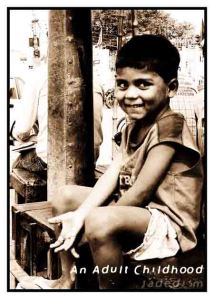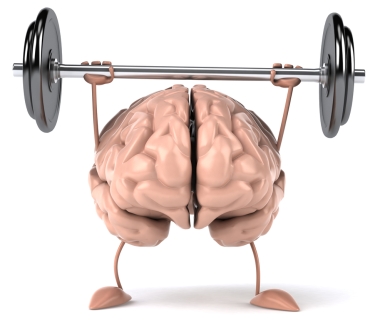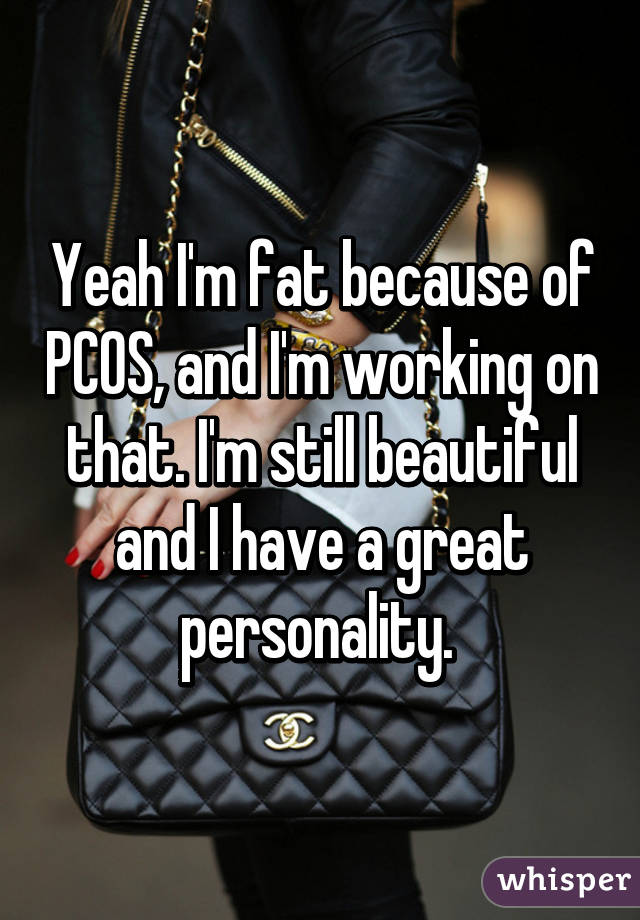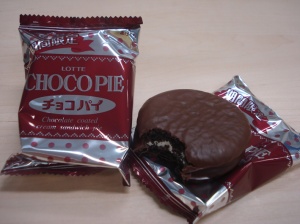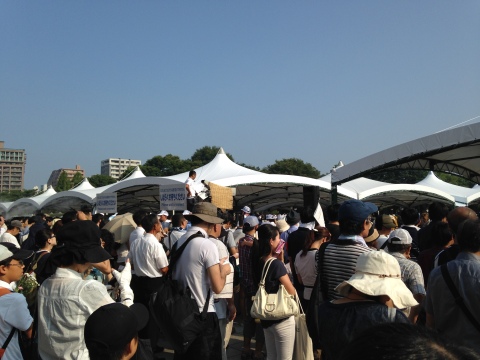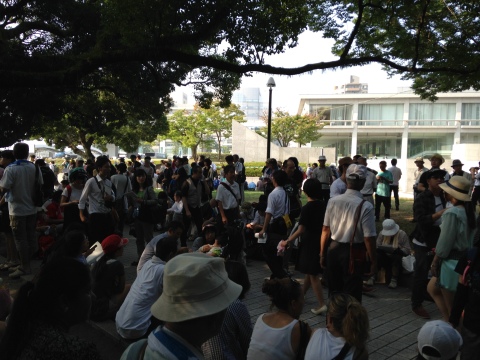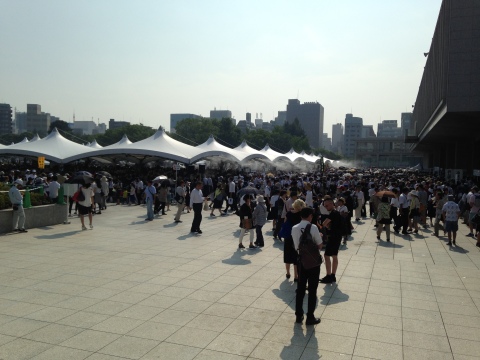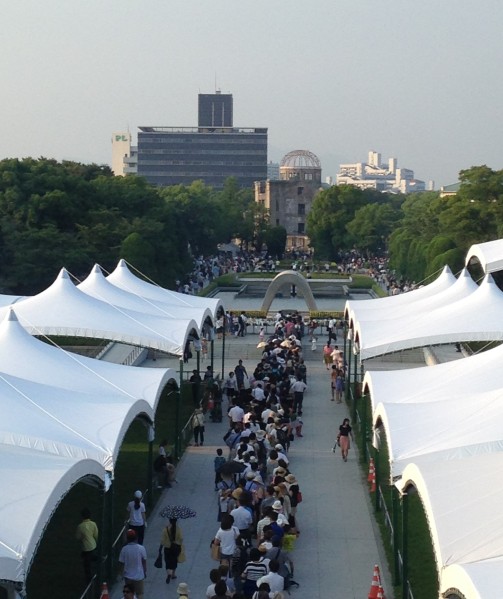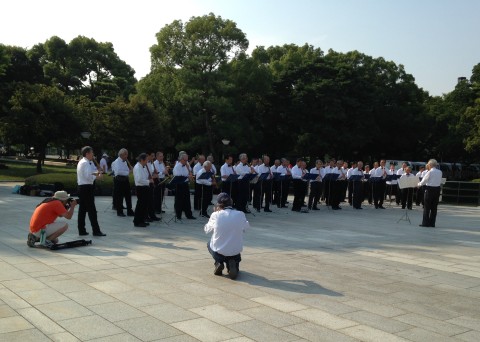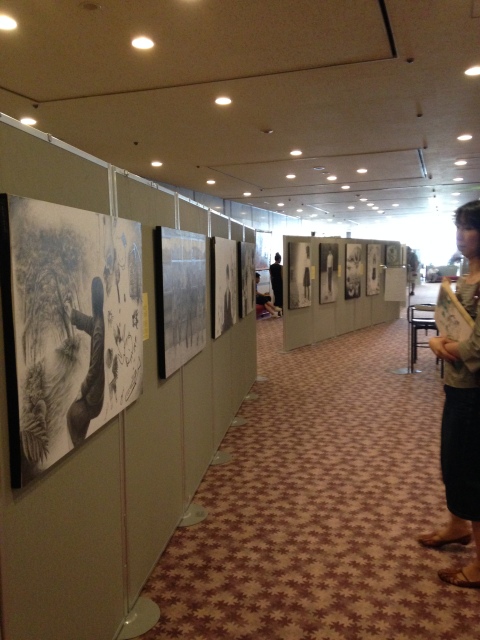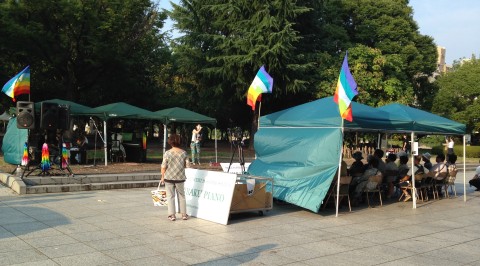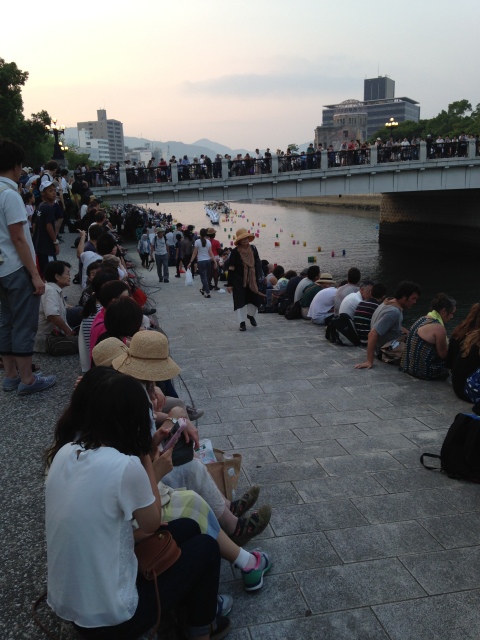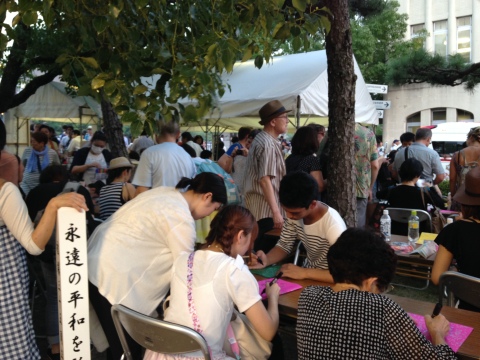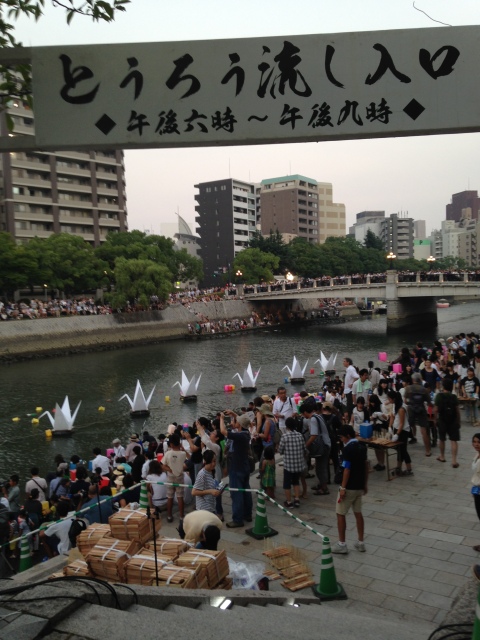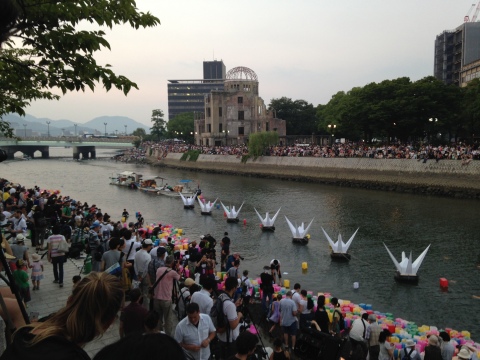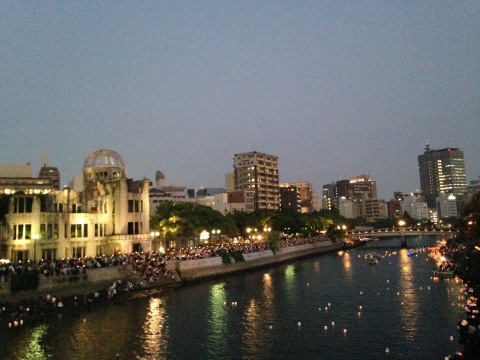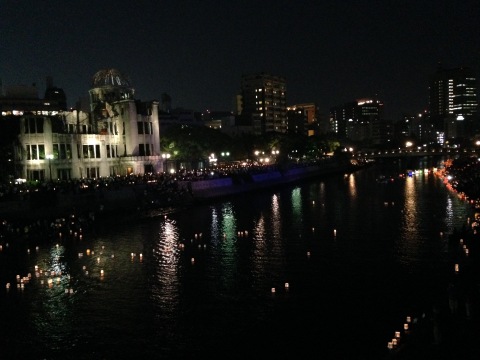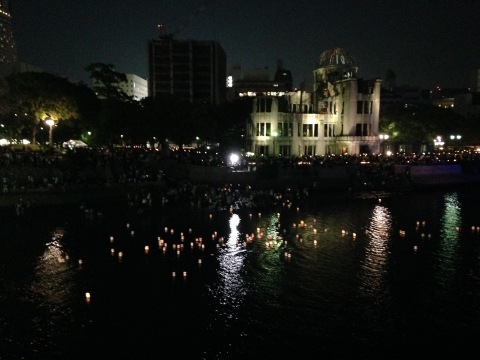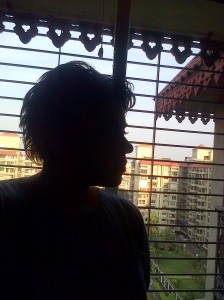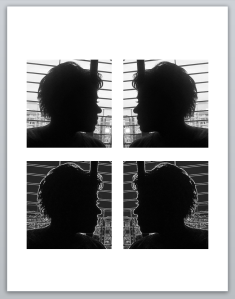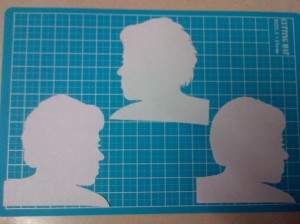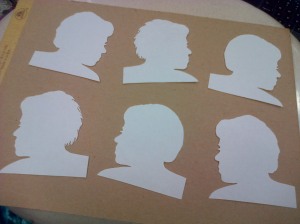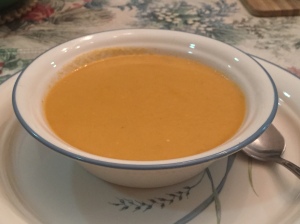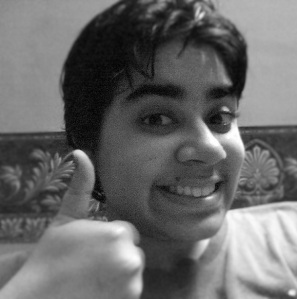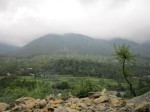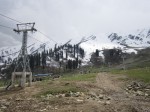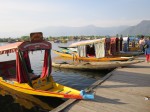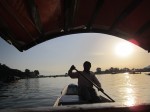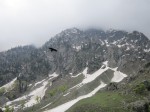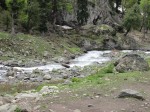Hello there!
Exciting news! I’ve decided (on a bit of a whim) to take a vow of silence (also called Maun Vrat) for the month of November. Depending on how I get on after 30 days, I might extend my vow! I’m hoping to document some of my insights from my journey here on the blog too, so keep checking back for more!
Since my mind is exhausted and now blank after a full day of introspection, relaxation, and settling into a new routine, I’ll just get down to some basic Q&A for today.
Enjoy!~
What’s a vow of silence?
A vow of silence is when you commit to not using your voice for a set period of time. Whether it’s an hour or a lifetime of silence, you can make up your rules. Vows of silence can be private (silent vacations, silent retreats) or public (while going about your daily routine). A vow of silence can be undertaken for religious, spiritual, and even political reasons. It is also known as Maun Vrat (Mauna Vrata in Sanskrit) or simply Maun (meaning silence) in many Indian religious traditions.
My explanation is rather elementary, simply because there are so many ways to undertake a vow of silence. In terms of complexity and variety, there is a lot left unsaid still, but I’ll leave it at that for now.
So what kind of Maun are you doing?
Glad you asked. I have previous experience with religious (Jain) Maun Vrats, but decided to take a public, non-religious, and more spiritual vow that does not focus on not speaking or talking at all, but rather targets increased awareness and presence of mind. Therefore, I’ve given myself the freedom to communicate in any way I see fit as long as it doesn’t use my vocal cords.
In the past, my religious Maun Vrats have meant I abstain from any form of communication with others. No making noises, sign language, hand gestures, facial expressions, and no writing/reading/singing/talking. This means practitioners cannot use cell phones, and technically, cannot write, read, or type. This cuts a person off from the rest of the world because sending emails, writing journals, making blog posts, sending texts, and attending to social media are all distractions from looking inwards to hear your inner voice and meditate upon your thoughts and consciousness.
While I enjoy these religious experiences a lot, what I want for myself right now, in 2017, cannot be fulfilled under the Jain guidelines for vows of silence. Instead, I’m interested in noting down the thoughts I have while I’m having them, and making this experience about learning to listen, increase one’s spiritual awareness, and be more in-tune with myself and who I am and who I want to be.
When do you start?
Actually, I started at the stroke of midnight on November 1st (Indian standard time). So today was my first day on my vow!
How did Day 1 go?
Surprisingly well. I put a lot of pressure on myself to prepare for this month on Halloween – that would be yesterday. I notified friends, family, co-workers, and people I communicate with on a daily basis. I also sat down and tried to hash out the terms and conditions I’ll be following while I’m on my Maun Vrat. Made good headway today, but definitely hoped not talking would save me energy, and that I could use that surplus elsewhere.
Any new insights you’d like to share?
I’ve been thinking and note-taking a bunch of points in my little notebook today. But I have made one important, and insightful decision today.
THIS VOW IS ALREADY A SUCCESS, WITH NO CHANCE OF FAILURE. WHATEVER HAPPENS, I WILL NOT FEEL GUILTY OR BLAME MYSELF FOR ‘NOT DOING ENOUGH.’
Taking this decision automatically made me feel happier, more relaxed, and put my mind at ease. I’m a master of self-deprecating humour, and more often than not, find myself the butt of most of my own jokes (where others will laugh at my expense). Alongside this, I also have unrealistic expectations of myself, which I can rarely ever live up to.
I’m a recovering perfectionist with the tendency to be overly critical of my own merits or successes. By choosing to not feel guilty, or be too hard on myself, during my whole Maun Vrat was both liberating and enlightening. May it propel me forward to strengthen my skills and convince me of my talents.
So how long is your vow of silence?
Because my decision to do the vow of silence was only decided one day in advance, I haven’t fixed on a length or duration for my vow. It will be anywhere in the vicinity of one month, going up to 12 months. But to play it safe right now, let’s say my vow of silence will be for the month of November 🙂
Why 30 days? and why now?
Well, as soon as we enter October and approach November, I always get a bit anxious. Somehow, this NaNoWriMo phenomenon makes me think of the month of November as a sort of free-for-all Lent (where I need to make a resolution and stick to it). With such strong feelings associated with the eleventh month of the year, I decided November first as initial day.
I could have waited to start on new year’s day or any other important day I wanted, but the only thing going through my head was…. why wait? If you know you’re going to do it anyway, then why waste time. Just jump right in. And so I have!
– – – – – – – – – – – – – –
(Some Afterthoughts)
Wow, it’s been ages since I wrote my last blog post! But here I am, and I did it. I’m not going to make any excuses or apologize for my absence. I’m relieved to say my health and mood are much better now. But what does my mood have to do with blogging, you may wonder? Well, I’ve noticed that I tend to write and blog under three conditions:
[1.] when I’m under loads of stress,
[2] when I commit myself to doing a challenge, or
[3.] when I’m feeling particularly depressed/angry and need to get it off my chest.
So what does this mean? It means that when I’m happy, content, and feeling calm, it never crosses my mind to write anything. This is why I’m gonna keep this journey guilt-free and not challenge myself to post x times a week during this personal time.
Peace out everyone!
A Comedy of (Slight) Errors
November 4, 2017
I’m late with my posts but hey, as long as it’s in chronological order who cares right?! right.
I have a funny story to recount from my day! This anecdote stars my SuperMom and me in a random, comical confusion of sorts.
MORAL OF THE DAY: Misunderstandings can never be blamed on one person. A communication gap is a lot like clapping. Both sides need to put in equal and opposite effort for the desired result. In fact, the person who talks needs to be very clear, making sure their thoughts are being formed into words, while the person listening also needs to consciously hear without putting their own interpretation into it. A gap grows when a speaker cannot put his or her ideas into words, and a listener cannot understand what he or she hears.
Since I started this Maun, I’ve been relying on hand signals and my version of sign language to communicate with my family. [Actually, only SuperMom can understand what I’m trying to get across, and she has to translate for my dad and everyone else, who just frown and give me blank stares. Let’s hope they get better at playing Dumb Charades or decipher my coded signs before the month ends!]
Anyway, this morning marked my mom and my first epic fail….. Thankfully, the misunderstanding was nothing serious, just funny from my point of view. As I was leaving the house to soak up my daily dose of Vitamin D this morning, I signalled SuperMom the following:
What I mimed:
SAY — HIM — I (my) — BATHROOM — NO — I — SHOWER — LATER
She nodded her understanding, and I left. (Normally SuperMom verbally repeats what I’ve mimed to her so that I can confirm she understood correctly, but this time we somehow forgot that step.) So, what did my hand signals mean? Well, isn’t it obvious – I said “tell him (the cleaning guy) to not do my bathroom because I’m going to shower when I get back.”
I soon returned, covered in beads of sweat and wanting to jump straight into a cold shower. Only… it was being cleaned. Did SuperMom forget to give the cleaner my message? I went in search of SuperMom to find out what happened. That’s when I realized my sign language got lost somewhere in translation.
Bottom line, SuperMom interpreted my signals to mean:
What she (mis)understood:
‘tell him to clean my bathroom because I’m not going to shower today.’
Ummm…. oops? Honest misinterpretation right?? Funnily enough, the slight difference between what I said, and what she (mis)heard, is a completely understandable situation.
Had I originally mimed what she thought I mimed, then my hand movements would have looked more like this: “SAY — HIM — CLEAN — I (my) — BATHROOM — (pause) — I — NO — SHOWER — NOW.”
Not much difference right?! The difference in meaning is so minuscule, that it could easily have happened between two speaking voices anywhere. Thus, Day 2 of my vow of silence began with this comedic exchange.
Until next time,
Ciao!
Bonds of Faith and Chance Encounters
May 30, 2017
There are times you’ll meet a stranger with whom you’ll click, and in the shortest time period, divulge all your inner thoughts and beliefs to that person. It’s a feeling of a delirious high when we get our feelings across to a sympathetic ear, regardless of whether the chance encounter between you two will ever come to pass again or not.
I look back at all the times I’ve put my faith into somebody and revealed my secrets and innermost feeling and insecurities to them. Whether a stranger, an acquaintance, a lover, or a friend, that bond has only been forged when I believe that there will be a nonjudgmental (or maybe just noncritical) ear to listen, and I presume the other person’s faith and knowledge that I will deliver pure, unadulterated words of truth that need not be unmasked. What trust such a momentous conversation and dialogue can have… I am grateful for these incredible experiences.
I’ve learned other the years that these chance occasions are always unexpected and shocking. Bonds forged once are not automatically renewed, nor are somewhat distant relationships automatically excluded from a plausible connection in the future. It’s the combined forces of time, place, moment, and present emotional and mental state that determine if the ‘click’ between two familiars or two strangers is there or not.
I’ve come to take these chance encounters, and moments of ‘truth speak,’ as priceless gem-like milestones in my life. Not quite epiphanies, as I tend to relegate those to only my academic endeavors, but more a meeting of serendipity. These are the bonds of faith.
For those individuals who forge that bond with me, I am eternally grateful for your compassionate ears.
30 Day Blog Challenge Finished!
November 30, 2015
Yay!! Finally it’s over! 30 days, 30 posts, 30 stressful days, and much happy and thoughtful blogging. I think it was a success and I want to reflect on the whole experience a bit more in the coming days, so look out for my reflections post I’ll be putting up after a few days!
Now, off for a well deserved rest!
~M
** O.S.T. stands for Original Sound Track**
Auditory Hallucinations is by far my favorite O.S.T. of the year and I find myself humming the tune fondly at the most random times even though I don’t hear it very often. The song is sung by artist Jang Jae In (feat NaShow) for the 2015 Korean Drama Kill Me, Heal Me. This drama has a fantastic star cast headed by Ji Sung and Hwang Jung-eum, and as any KDrama addict can attest to, this lead couple is infamous for their onscreen chemistry in the 2013 drama Secret Love.
I watched only the first half of Kill Me, Heal Me but felt satisfied with just those few episodes. That’s not necessarily a bad thing. Rather, the acting was, for me, miles above the story so I didn’t feel the usual frustrations to skip ahead to find out how it all wraps up because the superb acting was I got hooked on. Thus, I heard the Drama O.S.T. a handful of times and enjoyed it then. But, as with most sound tracks go, after watching the show I often forget about the theme songs that are associated with them. Not true for Auditory Hallucinations.
The O.S.T is composed, arranged, and written by ZigZagNote. NaShow’s rapping that starts off the song, followed by the strong yet soft vocals of Jang Jae In, are just striking. The whole piece is rather haunting and dreamlike, as opposed to foreboding or dangerous. Rather, it matches the plot of the K-Drama it covers, Kill Me, Heal Me, very well, with the storyline of Ji Sung’s character suffering from Dissociative Identity Disorder and has seven different personalities – although harmful to his public image if exposed – his personalities are portrayed more organically as if he is just passing through dreamlike stages of his persona. Thus, the O.S.T marks the limbo that resonates with a man being on the brink of madness and sanity.
Jang Jae In’s voice gives the lyrics and musical score the sorrowful sensitivity that takes this O.S.T. to the next level. The song without the rap is just as jaw-droppingly gorgeous. Her ‘twang’ (only way I can describe it) is remarkably well-suited for this song. I’m left feeling incomplete when the song ends and rather deflated because I just want it to go on and on! J We all know there are songs out there that we just want to hear on auto-repeat all night because it’s so mesmerizing and tantalizing… Auditory Hallucinations is one of those songs. It is addictive and I find a strong form of auditory withdrawal symptoms kick in for a while when it’s done.
Thanks to this one song, I became rather fanatically interested in singer and songwriter Jang Jae In, especially since she was a Korean singing talent competition participant and NON-winner. She was fantastic at the age of 20 in her SuperStar K2 audition and her body language in front of the celebrity judges (from the get go) just puts her a few notches above the rest (with extra brownie points for her vocal abilities of course). Although my healthy obsession with her is not as deep as my INFINITE obsession (let’s leave this for another blog post), you realize how small the world of Korean actors and entertainers is when I saw one of Jang Jae In’s music videos features actor Lee Won Geun as her love interest. This actor stole my heart and respect with his stellar performances in the Korean Dramas Cheer Up!/Sassy Go Go and Wild Chives and Soy Bean Soup: 12 Years Reunion this past year.
So check out Kill Me, Heal Me if you are interested in KDramas, but definitely check out the Drama O.S.T. ‘Auditory Hallucinations’ and let me know how you like it! It’s no problem if you don’t understand what Jang Jae In is singing about because neither do I, and I fell head over heels in love with this, regardless!
Persuasive Speech Writing: Vegetarianism
November 28, 2015
**This may not be the best argument for why someone should be a vegetarian, but I struggled a lot in my teenage years to try to persuade others to follow this exact argument… fond memories… This is my attempt at writing persuasively**
Are any of you vegetarian? There are many different kinds of vegetarians but in general it is the practice of being an herbivore and not eating meat, poultry, and fish. Why would you become one? Well, there are many reasons. It may be a requirement of your religion, or you may just hate the taste of meat. Also, you might be against the horrifying injustices and cruelties animals suffer in slaughterhouses, or just want to lead a healthier lifestyle. The three main types of vegetarians are lacto-ovo-vegetarians, who eat eggs and dairy products, lacto-vegetarians, who use dairy products but not eggs, and vegans, who consume neither.
Milk and other dairy products are not used by vegans because they believe that it is only meant for calves. We are the first species to drink milk after our weaning years and the first to drink the milk of other animals as well. Also, eggs are not alway considered vegetarian because they are the hen’s offspring and the product of their sexual organ. Also, the size of the egg grows as time passes. Therefore, they are impure and not completely lifeless.
I am a lacto-vegetarian. Since the time I was born, I was brought up to follow this diet because of my religion, Jainism. As ahimsa, non-violence is one of the most important Jain principles and way of life, being a vegetarian is a way of minimizing the amount of violence and pain I give to other living creatures. Other Jains who are very pious, are much stricter than myself and don’t eat tuber-roots, which are vegetables grown underground. The reason is that vegetables, such as carrots and potatoes, are the home of many tiny organisms. So, by digging up these vegetables, the lives of many creatures can be in danger.
Being an herbivore doesn’t mean I don’t harm anyone. Science has proven that vegetables and fruits are one-sensed organisms. They have the sense of touch. However, there is less violence involved in plucking a fruit rather than killing a chicken. Trees are living beings as well. Scientists have been able to hook up cardiographs to them, which show their heartbeat. They are very sensitive and their graph goes wild when someone comes to cut them or their friends down!
Did you know that many famous people are either vegans or vegetarians? This includes Drew Barrymore, Michael J. Fox, Brooke Shields, Brad Pitt, Ricki Lake, Leonardo da Vinci, Louisa May Alcott, and Mark Twain among many others. All of theses individuals probably realized that by eating meat they would become murderers. In other words, by being a non-vegetarian, it would be like you were killing and eating your own ancestors, which is the not too different from cannibalism.
There are many advantages of practicing vegetarianism. People have less pesticides, fats, and cholesterol, and at the same time, are less likely to have a heart attack, cancer, high blood pressure, diabetes, gallbladder disease, hypertension or any other illness. Their bodies retain fewer antibiotics, fossil fuels, and toxic chemical residues, and they have a very small chance of receiving a bacterial infection such as E. coli.
Vegetarians get their calcium, protein, iron, and vitamins from different vegetables, leafy greens, beans, cereal, nuts, fruits, juices, bread, and about fifteen minutes in the sun each day. The proper food promotes their physical and psychological health. Meat has more proteins than the daily need but an excess amount of meat protein creates unnecessary uric acid, which is a breeder of several diseases.
Becoming a vegetarian is the first step in lowering the violence done onto animals. A total number of about seven billion animals are slaughtered each year in the United States alone. SEVEN BILLION ANIMALS ARE SLAUGHTERED EACH YEAR! That’s about 500,000 animals killed each hour! Animals raised primarily for the production of food are not capable of having natural sexual, social, hygienic, and parental behavior. They are in excruciating pain from they time that they are born and taken away from their mother to the time they are taken to the slaughter house. R. M. Dolgin once said, “Anything that can feel pain should not be put to pain.”
Individuals who consume meat, dairy, and egg can cause many sicknesses including: strokes, heart attacks, kidney stones, breast cancer, colon cancer, ovarian cancer, cervical cancer, prostate cancer, and stomach cancer among others. Vegans have a four percent risk of death from a heart attack compared to fifty percent risk for meat eaters. Also, the intake of cow’s milk is linked to dysfunctions of the thyroid gland, osteoporosis, headaches, and even Sudden Infant Death Syndrome, Lou Gehrig’s disease, and Multiple Sclerosis.
It is imperative that everyone become a vegetarian in the near future for the sake of the environment, for animal rights, and for health purposes. Being a vegan or vegetarian will significantly increase the lifespan of human beings and help them have a more tension free life. They will be able to save the lives of about 100 million people who would have starved to death as a result of malnutrition and at the same time decrease the amount of pollution in rivers and streams. Vegetarianism will help make the world a better, happier place where all beings will be treated as equals and animals will have their own rights. As Leonardo da Vinci said, “The time will come when men will look on the murder of animals as they now look on the murder of men.”
Recipe: Fresh Vegetable Stir Fry Spring Rolls
November 27, 2015

Fresh Vegetable Stir Fry Spring Rolls
**Most of the time, I like to cook quick meals that I know are healthy and require little preparation. One staple go-to meal for me when I’m feeling peckish but not famished is a simple fresh spring roll with stir-fried vegetables. By fresh, I mean not deep-fried. Since I bought my first packet of rice paper in Chicago, I’ve never looked back. It is now one of the main ingredients I will buy in bulk to bring back to India whenever I’m travelling.**
 Ingredients:
Ingredients:
1 tsp Oil
1 Onion
1 Carrot
1/2 Bell Pepper
1/4 Cabbage
1-2 Tbsp your choice of Sauce
[Option: tasty with a handful of bean sprouts and/or rice noodles]
Recommended Sauces:
Soy Sauce
Barbecue Sauce
Peri Peri Sauce
Directions:
- Heat oil in a frying pan and add onions. After 2 minutes, add carrots and green peppers. In the end, mix in cabbage and noodles/sprouts (optional) then put in a few drops of your favorite sauce to the mixture. Make sure it tastes a tiny bit stronger than you’d like, because it will get wrapped in rice paper.
- Take a rice paper round and dip in water for 10-20 seconds. place wet rice paper sheet on a mat or cutting board, load stir-fried mixture, and wrap into a parcel to make spring roll. Repeat until your rice sheets and stir-fried vegetables are over.
Note: Through trial and error, I’ve learnt that this form of spring roll tastes better when the sauce flavoring is put inside the roll, as opposed to a dipping sauce accompaniment. Also, even if the filling for the spring roll is runny, the rice paper tends to hold liquid well. Alternatively, adding just a few strands of rice noodles will have the effect of soaking up any extra liquid. Just have fun and experiment!
Cooking Time: 15 mins
Yields: 4-6 rolls
Good Thanksgiving Memories
November 26, 2015
Happy Thanksgiving everyone! I’d like to give thanks today for how this year has progressed and the wonderful people in my life who make living it quite so fantastic.
Thanksgiving is a quintessentially American/Canadian holiday that I’ve been aware of but never really celebrated or participated in until I left the United States to study in Wales, followed by two separate and equally memorable occasions with friends in Chicago.
I vaguely remember attending two Thanksgiving meals prepared by the American members of the International Students Association (of which I served as Vice Chair). It was a potluck but I didn’t contribute a dish, I remember, as I was still under the impression that the holiday food was centered around Turkey and meat. My memory of those two days are filled with everyone sitting along a looong table, the room filled with the echoes of chatter and laughter, and everyone seemingly stuffing food down their own throats until food coma commenced. If I wasn’t so very close to everyone who worked so hard to prepare the food and organize the holiday meal, I would probably have given it a miss altogether. I particularly remember my Greek-German-American friend’s ‘secret family recipe’ cheeseball which was the size of a fist and that I finished almost singlehandedly. No doubt, Thanksgiving became synonymous with a good excuse to enjoy a fun-filled thematic party, mid-day with friends – particularly featuring out-of-this-world cheese and crackers!
My next invite to join in Thanksgiving festivities came from a dear friend over 4 year later in Chicago. Hyde Park resembled a ghost town during those few days, when nearly all my friends and classmates returned to their respective homes to spend Thanksgiving with their families. My dearest friend decided to stay in Chicago and invite her mother to drive up from Nashville and a childhood family friend (also living in state) to celebrate the day with her instead. When she heard I would be around (and alone!) on Thanksgiving, she insisted I join her and her two guests for the day. Accepting her invite wasn’t difficult, not because I didn’t want to spend the day alone, but because I knew the day wouldn’t be hyped and low maintenance. I knew I wouldn’t have to anything to lose. In fact, if nothing else, I knew I had a new culinary experience to enjoy because she was a fellow vegetarian and her whole Thanksgiving meal would be meat-free and featuring the ‘tofurkey’. Now isn’t that enough intrigue to accept her invitation graciously?! This time around too, I didn’t contribute my own vegetarian Thanksgiving dish – partly because she told me there would be loads of food already…and also because I’m not a fabulous cook like her! Hahaha.

My First Tofurkey!
We were four ladies and a kitty that day, and I must say, the food and company was enviably fantastic! I thoroughly enjoyed being able to dig into the side and main dishes and I can’t honestly remember how many helpings I had of everything until I no longer had any space. In addition to my Wales experience, Thanksgiving now also became synonymous with sharing a lavish meal with your nearest and dearest, showered with much love and affection, and no less than three extra helpings of carved Tofurkey!
My most recent Thanksgiving memories are from two years ago, only a year after my Tofurkey experience. Again, I found myself in Chicago and with no company for the traditional Thanksgiving meal. This time, it was my lovely married friends who invited me to join in their celebrations. She was my classmate in Chicago and got married the first winter after we met. It didn’t take long for the three of us to get together and realize we had a lot in common. Like me, they both spent considerable time outside and inside the US and were well aware of the pros and cons of both scenarios. One grew up in Peru while the other spent some formidable years in Papua New Guinea as a child. We quickly got into a lovely routine of meeting up with this power couple every week or two for a meal and lovely chatter.
So when Thanksgiving plans were discussed, I happily accepted an invite to give my friend company while she prepared Thanksgiving dinner for her meat-loving husband and brother-in-law. I arrived early to assist with the preparation (barely!) and setting the table for the meal and we sat and watched the annual dog show that gets televised in the US while food cooked. I fondly remember that my friend’s husband tried to carve the turkey when we sat down, but quickly handed the carving knife to his wife who he knew would do a better job! The meal was unsurprisingly fabulous thanks to the culinary skills of my lovely friend. From the sides to the specifically vegetarian tofu alternative to the wine, it was a wonderful meal. I’m not sure if football featured or not that day…probably not if I stuck around. (I’m not a big sports fan.) But it was long past dark when I left their warm aromatic apartment to head home with a bunch of leftovers to tide me over the next day. This experienced added to my already beautiful memories I already had of Thanksgiving. Thanksgiving additionally became synonymous with an intimate and sacred family gathering that is multi-cultural, all-encompassing, and full of sharing.
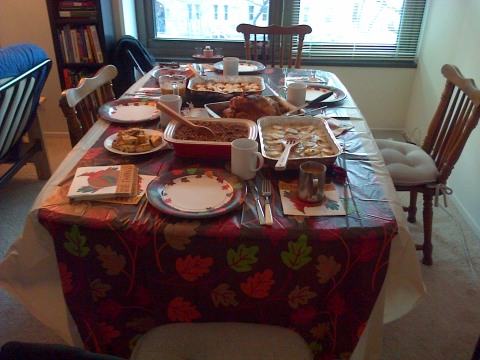
Setting the table for a Thanksgiving feast
In the past decade, I’ve partaken in no less than three Thanksgiving celebrations with people I love and care deeply for. Each experience has been cemented as beautiful memories that only increase the appreciation I have for this American holiday. I can’t wait for my next Thanksgiving memory!
Recipe: Matar Ke Chilke Ke Pakode
November 25, 2015
Matar Ke Chilke Ke Pakode

Ingredients:
10-15 matar ke chilke (prepared peapod shells)
1 tbsp besan/chickpea flour
1 tbsp chawal ka atta/rice flour
1/4 tsp red chilli powder
a pinch of turmeric powder
oil for frying
salt to taste
Procedure:
- Wash and pat dry matar ke chilke.
- Cut them in 1 1/2″ pieces.
- Take besan and chawal ka atta in a bowl. Add salt, turmeric powder and red chilli powder. Mix well.
- Add water, little by little to get a dropping consistency of the batter. It should not be too thick or thin.
- Heat oil in a deep pan/kadai.
- Drop the batter laden chilke in the hot oil.
- Cook till they get a light brown colour and drain on an absorbent paper.
- Serve these crispy yummies with imli/tamarind chutney.
Cooking Time: 30 minutes
Makes: 2 servings
Matar Ka Chilka Ka Chaat
Add crispy matar ka chilka pakodas to the chaat along with chopped onions, chopped coriander, imli/tamarind chutney, dollops of curd and bhujia sprinkled on top. It tastes truly amazing.

Recipe: Russian Baklazhannaya Ikra / Poor Man’s Caviar (with pictures)
November 24, 2015
Russian Baklazhannaya Ikra / Poor Man’s Caviar

**This classic Russian eggplant spread is best served cold with Russian rye bread. The flavors remind me of Indian dishes like Pav Bhaji and Baingan Ka Bharta, and would taste great warm with roti as well! This Ikra was made using local Indian produce and will require readjustment in amounts if cooked elsewhere.**
This is a Vegan, and Vegetarian dish that can be eaten warm or cold!
Ingredients:
2 medium-sized eggplants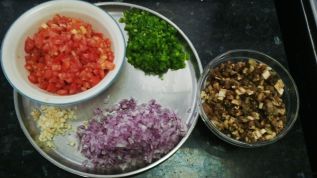
1/4 cup tomato puree
4 tomatoes
3 onions
1 green pepper
1/2 head of garlic
1 tbsp olive oil
1 tsp sugar
salt to taste
Directions:
Place whole eggplants on direct heat and roast until skin begins to bubble. Take off heat, peel skins, and dice eggplant. Dice or mince the tomatoes, onions, pepper, and garlic too.
Heat oil in a frying pan and put in onions and garlic. When translucent, add green peppers and eggplant pieces. After 2 minutes, stir in tomatoes.
Now add tomato puree, salt, and sugar. Mix, cover with lid, and turn down the heat to medium low. Simmer for 20-30 minutes while stirring occasionally.
Your caviar is ready to eat as is (that is what I did) or refrigerate for a few hours (or overnight) before serving with your choice of bread!
Note: I tried an online recipe much like this one (no tomato puree) about a year ago and loved it, but I misplaced the recipe, so this time I made it from memory and it still tasted delicious. A lot of the recipes you will find are either pureed to a paste or a lot chunkier, but I like making mine with minced/diced vegetables so that it can evenly be spread on the wheat bread we have at home.
Cooking Time: 60 minutes
Serving Size: 4 people
Recipe: Vegan Carrot Cinnamon Cake (with pictures)
November 23, 2015
Vegan Carrot Cinnamon Cake
**I adapted this recipe from allrecipes.com according to what local Indian ingredients are available and take into account my family’s food preferences. This delicious recipe is super simple to make and very moist to eat. It doesn’t require frosting and can be gobbled up in a matter of minute!**
This is a Vegan, Vegetarian, Egg-Less Recipe!
Ingredients:

carrot cake ingredients
5 carrots finely grated
1 cup whole wheat flour
1/4 cup flax seed meal
3/4 Tbsp cinnamon powder
3/4 cup hot water
1 1/2 tsp vanilla essence
1/8 cup sliced almonds
1 tsp baking soda
1/2 cup granulated sugar
1/4 tsp salt
Directions:
Preheat oven to 350 degrees Fahrenheit (or 180 degrees Celsius). Prepare a greased baking pan (I used 3 small bread loaf pans).
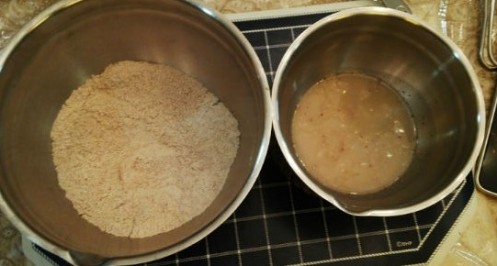
dry and wet mixtures
In a mixing bowl, whisk together dry ingredients: whole wheat flour, cinnamon powder, baking soda, and salt. In another mixing bowl, soak flax seed meal in the hot water until it absorbs the water, then add sugar and vanilla essence.

ready to bake!
When sugar has melted, add grated carrots and almonds. Now add dry mixture to this wet carrot mixture and pour into baking pan.

bake at 350 degrees Fahrenheit or 180 degrees Celsius
Bake for about 30-40 minutes or until the cake is cooked properly in the center.
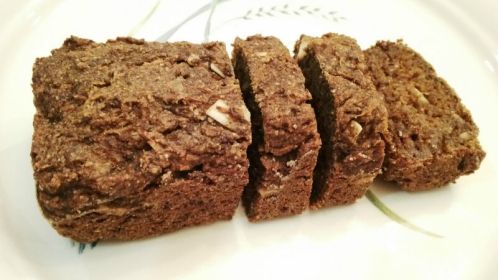
sliced and ready to gobble up!
Let it cool before slicing, and it’s ready to eat!
Note: I halved the original recipe, which also suggests eating this with frosting but I found it sweet enough on its own. It was gobbled up in a matter of minutes!
Cooking Time: 60 minutes
Serving Size: 10-12 people
UV Resin Craft: Name Charms
November 21, 2015
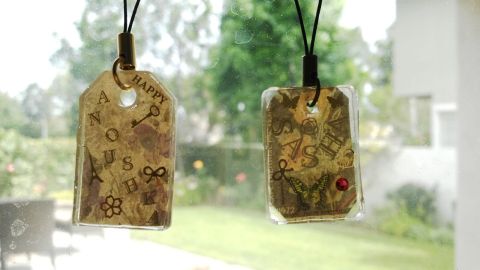 I came across UV Resin Craft for the first time when I walked into Tokyu Hands and came upon their big counter display that looked both interesting, beautiful, and (shock!) doable. I didn’t end up buying anything from there initially, but did cave in and buy some supplies when I saw they were available at Daiso for only ¥100! I just couldn’t resist trying this fun project out!
I came across UV Resin Craft for the first time when I walked into Tokyu Hands and came upon their big counter display that looked both interesting, beautiful, and (shock!) doable. I didn’t end up buying anything from there initially, but did cave in and buy some supplies when I saw they were available at Daiso for only ¥100! I just couldn’t resist trying this fun project out!
UV Resin involves lots of hand eye coordination and working with tiny materials. It took ages (and hours of YouTube how-to-make videos), but I had fun making my first charm, and the results when I cured the resin under sunlight weren’t bad at all. Realizing I could experiment more, I decided to go back and buy a wider variety of material from both Daiso and Tokyu Hands (maybe not the best idea because I haven’t used 90% of those materials in the past 5 months).
Anyway, since these UV Resin Charms look soo cute, I decided to make and gift one each for my younger cousins who are 11 years and 9 years old. I wanted to make them something personalized, so I decided to put their names on the charms and try to incorporate fun elements into the design. It took me a few sunny days to complete them, as I kept retouching them until I was satisfied, but they turned out much better than I had ever imagined in the end! The photographs I took of them before presenting it to the girls were pretty awesome too!
What do you think?
Elevator Logic: how to use a lift
November 20, 2015
 Using the elevator isn’t as easy as it sounds. Elevator logic and etiquette are actually rather complex and forever changing, and you suddenly realize (if you’re anything like me) that a day doesn’t go by when you’re not annoyed at somebody’s behavior or mannerisms while riding the elevator that day. It’s not like lifts have directions or a how to manual that everyone is required to read. Neither does it have visual diagrams that illiterate people can use to understand how to use this machinery. On top of that, using an elevator is not taught at primary school as an essential life skill, unfortunately.
Using the elevator isn’t as easy as it sounds. Elevator logic and etiquette are actually rather complex and forever changing, and you suddenly realize (if you’re anything like me) that a day doesn’t go by when you’re not annoyed at somebody’s behavior or mannerisms while riding the elevator that day. It’s not like lifts have directions or a how to manual that everyone is required to read. Neither does it have visual diagrams that illiterate people can use to understand how to use this machinery. On top of that, using an elevator is not taught at primary school as an essential life skill, unfortunately.
I’ve really gotten used to the non-uniformity in elevator practices among riders, but it hasn’t escaped my critical eye. I feel like today’s blog post has been waiting to be written for about 10 years now. Well, at least I finally got around to it!
I feel like its commonplace for myself and other people to make occasional mistakes while riding an elevator and getting embarrassed over our actions. However, I believed these mistakes were a rare occurrence while I was growing up. But when I moved to India, the ratio of clueless elevator riders seems to exponentially increase. (Is this why buildings still have a liftwala to guide you?) Unfortunately, since I’ve been living in India, the error in people’s thinking and ways is all-too-evident to see. Whether it is getting on the lift without paying attention to the direction it is going in, forgetting to press the button for which floor you’re intending to get to, or not pressing the appropriate ‘up’ or ‘down’ key when calling the elevator to you, elevators are contraptions used to serve knowledgeable and ignorant folks alike.

So let me just cut to the chase – it doesn’t matter where the lift is at that point in time, whether you press the ‘up’ or ‘down’ button is very straightforward. If you would like the elevator to take you up to a higher floor – press the ‘up’ arrow. Even if the elevator is already on a higher floor and needs to come down to get you, you simply need to press the direction button for where you want to go. The elevator doesn’t need to be told how to act, you need to feed it information on where you want to go and it’s up to the machine to figure out how to do it. And if you want the elevator to take you down to a lower floor – press the ‘down’ arrow. Regardless of whether it is already on a lower floor and needs to come up to pick you up and take you back down, you simply inform the lift through the ‘down’ button that you’re destination is below you’re current location.
Related Sites:
How to Operate an Elevator and Make the World a Better Place (disorganisationguru.com)
How to Use an Elevator (katyjane.wordpress.com)
Nudging to choose elevator arrows correctly (mostlyeconomics.wordpress.com)
Going up in the world? Why where you stand in the lift reflects your social status (www.dailymail.co.uk)
How to use an elevator… this is silly but plz help? (in.answers.yahoo.com)
How to Ride an Elevator (www.wikihow.com)
The 100th Blog Post: Top 10 Most Liked Posts, Top 20 Most Viewed Posts, and Some Blog Stats
November 19, 2015
 Today’s blog post marks the 100th post I’ve made since I began writing on Manjree’s Blog! I started back in 2012 and now, 4 years down the line, I’m honestly surprised it’s still up and running despite the 3 year hiatus! Just thought I’d take some time out to celebrate the achievement and see how far the Blog has come since then! Below, I’ve compiled lists of my most popular and most visited posts to this day and even include a section below where I’ve shared some blog stats (not really important, but will probably be fun to look back on in the future!).
Today’s blog post marks the 100th post I’ve made since I began writing on Manjree’s Blog! I started back in 2012 and now, 4 years down the line, I’m honestly surprised it’s still up and running despite the 3 year hiatus! Just thought I’d take some time out to celebrate the achievement and see how far the Blog has come since then! Below, I’ve compiled lists of my most popular and most visited posts to this day and even include a section below where I’ve shared some blog stats (not really important, but will probably be fun to look back on in the future!).
Before that, some thoughts. Although I started this blog with the intention of writing what I found interesting, I would sometimes fall into the trap of favoring topics that I knew would bring traffic to my blog. As a new blogger, I’ve also been guilty of obsessing over blog stats. I think I’ve reached a nice balance now. Since I returned to blogging in 2015, I’ve found that my posts are very personalized and I enjoy sharing my life experiences and anecdotes. There are times I know that topics I’ve written about (or want to write about) will barely get viewed, but that doesn’t stop me.
The only big difference is how much I share and promote my blog since its conception. In 2012, I barely promoted or announced to friends and family that I was writing. Except for a few people, no one I personally knew had a clue I was blogging. The reason I decided to keep it in the dark was possibly because I’m notorious for not sticking to my resolutions and didn’t think I’d blog for very long. But then, when I started my NaNoWriMo-inspired 30-Day Blog Challenge this month, I wanted the pressure and attention from my peers that would push and support me to write and post something everyday – even if only for the month of November. Thus, the number of people reading my writing, unsurprisingly, has risen since I started sharing my work on social media.
TOP 10 Posts with the Most ‘Likes’ by other Bloggers
- Recipe: Spanish Gazpacho (*new*)
- Poem: The Secret
- Capturing Scenes from Jammu and Kashmir Part 1
- Body Images: a comparative approach
- Culture Unplugged Film ‘The Wonder Hospital’ (2010)
- My 1st Attempt (and Failure) at Writing Satire
- Skeletal Depictions of Hello Kitty and Other Children’s Cartoons by Michael Paulus
- Cannibalism & Fasting Quote by Gang Yue
- The Importance of Saying ‘Sorry’, ‘Thank You’ and ‘I Love You’ across Socio-Cultural Contexts
- Poem: Bliss
TOP 20 Most Viewed Posts of All Time (and subject)
People I encounter often ask me what subject(s) or theme(s) I blog about and I never know how to explain other than to say ‘random stuff. just everything.’ However, looking way back at my one month anniversary post from 2012, I can’t help agreeing with my younger self when I said
I’m still quite pleased with the eclectic mix of subjects I’ve managed to include here […] I hope variety continues to play a big part in this blog…
Manjree’s Blog Stats
POSTS MADE ~ 100
FOLLOWERS ~ 43
TOTAL VISITORS ~ 10,884
TOTAL VIEWS ~ 20,346
MOST VIEWS IN A DAY ~ 136 views on Nov 5th, 2015
MOST COUNTRY VIEWS FROM ~ USA, India, then UK
Recipe: Dragon Fruit and Banana Green Smoothie Attempt #2 (No Added Sugar or Sweeteners!)
November 18, 2015
You’ll find that I don’t have a post up for my green smoothie attempt #1 up because it was a DISASTER! I’ve since tried to eradicate that particular disaster from my mind (lets just say, spicy green chutney in a smoothie – even by mistake – is a sure way to die by acid reflux…).
Anyway, attempt #2 was a success and I really liked the combo of ingredients in this one! Plus, it doesn’t call for sugar, honey, or maple syrup! Unless it’s chocolate or pastries, I prefer my food & drink not too sweet anyway. So, the smoothie I made a few days ago was perfect! It was mild, sedated, had loads of texture, and tasted yum! I didn’t realize until I sat down to drink it that I hadn’t put anything other than 4-5 grapes and a few chunks of banana in for sweetness.
Try it and let me know what you thought!
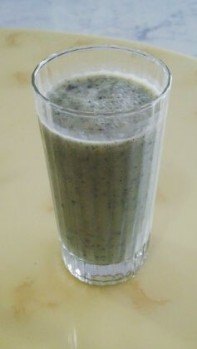
Dragon Fruit and Banana Green Smoothie
**This recipe is nutritious and includes no sugar or sweeteners. It is mild and had lots of texture due to the dragon fruit and chia seeds**
This is a Quick, Sugar-Free, Raw, and Vegetarian Recipe!
Ingredients:
1/2 – 1 banana
1/4 dragon fruit
handful of grapes
small handfull spinach
1/2 Tbsp chia seed powered
1 glass (220ml) milk
ice cubes
Directions:
Put all of the ingredients into a high-powered blender and blend until smooth. Serve fresh immediately.
Note: If you’d like to up the sugar content of this smoothie, just add 1 Tbsp of sugar or twice the amount of grapes and banana and that should set you straight!
Optional: simply substitute the milk for soy milk or almond milk to make this recipe vegan!
Prep Time: 10 minutes
Serving Size: 2 glasses
Flavour: Mild Banana
Color: Light Green
Texture: Crunchy!
Socio-Cultural Constructions of Childhood: Questioning the Existence of an ‘Archaeology of Childhood’ using Island Metaphors: Part 3
November 16, 2015
Please respect my ownership of the words and ideas used herein, and do not use or share any portion of this series, in part or in whole, without my expressed permission. Thanks!
Prompt: Considering the term ‘island’ in its broadest sense, I take a look at ‘childhood’ and critically assess how the archaeology of this ‘metaphorical island’ informs us about the concepts of isolation and interaction?
**This is Part 3 of a 4-post series**
Isle of Child
Island Terminology: specific examples
This feeling of ‘island-ness’ as explained by both Kohn (2002) and McKechnie (2002: 128) is often consciously done, adding to the feeling of ‘islanders’ as being very closed and ‘inward-looking’ peoples who distance themselves from all outsiders (Rainbird 2007: 18-19; Waldren 2002: 5). However, this is a very Western idea and non-Western ideas quite differ from this perspective. The Tongan writer Hau’ofa describes the Western view of Utopia as a sort of ‘romantic exclusion’ while his people would more see it as ‘romantic inclusion’ full of connections and interaction (Edmond and Smith 2003: 12).
What is important to take into account is individual intention and agency involved in portraying an island identity (Eriksen 1993: 140-141; Lape 2004: 229). This idea is of importance to ‘childhood’ as children and adults alike consciously act, display, or re-define their individuality and group identity through associations with peers and media (Rapport and Overing: 32; Buckingham 2000: 7). It is even possible that adults who are children’s writers or make children’s television programmes present ‘childhood’ knowingly, as something quite different to themselves. Buckingham (2000) makes clear that these mental boundaries being erected are slowly crumbling down. However, Hau’ofa above has shown that the relationship between children and adults should focus on the mutual understanding and co-existence among them. Therefore, in Tonga terms at least, childhood can and is an island if the island is to mean anything other than isolation (see Lape 2004 and Venn Diagram below). Therefore, it now becomes important to re-address the original definition of ‘island’, followed by the possibility of ‘seascape’ as a solution to all the contradictions.
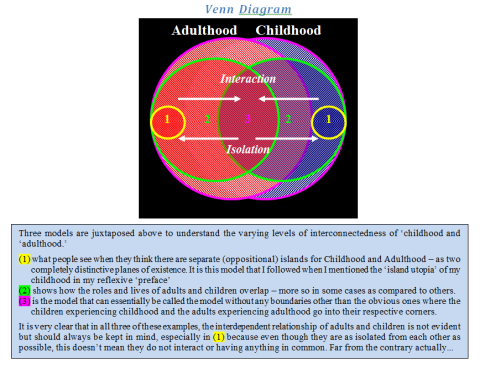
Definition ‘Island’. Island themselves are only ‘land surrounded by water’ (Edmond and Smith 2003: 9). If so, then how does this simple straight-forward word come to mean or symbolise anything else? For Westerners, the contrast between land and sea makes for a sharp barrier… a point at which the ‘land-scape’ ends. Fully enclosed in boundaries, islands have been notoriously seen as becoming infused with meanings of isolation (Lape 2004: 223; Kohn 2002: 39; McKechnie 2002: 131). Therefore, it is through human intervention that a word or concept gains a multitude of meanings. Whether ‘island’ or ‘childhood’, both are social and cultural constructs (Sofaer Derevenski 2000: 8; Wilkie 2000: 100-101; Rainbird 2007: 5) minus the given facts that every island is barricaded and that every human being is a child at one stage.
Size Matters. If it was so simple to attribute ‘isolation’ to ‘island’ and ‘barrier’ to ‘sea’ then that does not explain how continents and huge land masses fit into this formula. Consequently, it has been said by island archaeologists that islands such as Australia do not fit the criteria of an ‘island’ and so have been labelled as ‘continents’ instead (Fitzpatrick 2004: 6; Rainbird 2007: 20; Edmond and Smith 2003: 2). Therefore, people’s constructs overpower the natural definitions of both terms. Clearly speaking then, childhood is not an island as promoted or believed to be (Island Utopia) but has been made to be one by Westerners[1] – possibly because a child and an adult are oppositional and distinct from each other but childhood and adulthood are more fluid.
With reference to size, the population of childhood is indeterminable but there is no correlation between children and childhoods experienced. And in the past, as there was high infant mortality and at least 50% of the living were children (see Chamberlain 1997: 249-50), it would be a hindsight to say they could be separated from adulthood. Isn’t it then possible that a place with less danger and more security can boast more ‘childhoods’ while ‘having to survive’ required them to have a more blurred relationship which resulted in fewer ‘childhoods?’
‘Seascape’. Islands are sometimes (falsely) said to be ‘self-sustainable’ with no outside help (Eriksen 1993: 135). If this is true, then children cannot be islands because they are always shown in relation to adults (Sofaer Derevenski 2000: 8). Therefore, they cannot sustain themselves without adult influence. However, I’d like to point out a fact hidden from many geographers and island archaeologists….as Model A shows, an island is said to be surrounded by water but what is underneath the water? It is land and soil (idea influenced by Rainbird 2007: 145-155 on ‘drowned landscapes’). Therefore, the sea is not endless but does have a ‘bottom.’ And so, more realistically islands are surrounded by land (See Model A).

Therefore, what was once thought to be an isolated island – a single unit of analysis, has recently been re-defined into this idea of sea as ‘pathway’[2] (Rainbird 2007: 57; Lape 2004: 223-224; Gosden and Pavlides 1994: 162; Anderson 2004) or a “sea of islands” (Hau’ofa in Edmond and Smith 2003: 8-9). If these different ideas were to be joined – this would lead the notion of ‘land as pathway’ and a ‘pathway of islands.’ Similarly, if children and adult are separate, this does not negate the fact that there is a ‘path’ between the two. Same goes for childhood and adulthood. Due to the influences that work both ways (see Rainbird 2007: 172), and the existence of this ‘path,’ it becomes difficult to put boundaries around the categories, leading to blurred margins and merging (see Buckingham 2000).
Gosden and Pavlides (1994) coined the term ‘seascape’ in order to make it more easily understandable what kind of factors influence a ‘seascape’ setting, making it possible for boundaries to go beyond the physical land (Lape 2004: 228-229). The factors that can influence the life of an islander are studied. This only reinforces the fact that all of it is ‘landscape’ although, because of the sea, it is called ‘sea-scape.’ For childhood, the seascape can mean a multitude of things such as political and institutional pressures as well as children’s rights (Buckingham 2000:5), etc… all of which influence (like ocean currents) how a childhood will be.
Physical boundaries are different from the ‘social boundaries’ made mentally by people due to human agency (Lape 2004: 224). Therefore, these boundaries do not necessarily happen on the outskirts of an ‘island’ – many boundaries being made inside each island or alternatively in the middle of the ocean around a whole series of islands (Eriksen 1993: 141, 144; Rainbird 2007: 54, 66). Biogeography of island is changed by human ‘intervention’ (see Rainbird 2007). As mentioned already, the main internal boundaries for childhood would be between the rich and poor as well as girls and boys (Buckingham 2000: 77-78) and may go so far as to incorporate families (parents + children) which cross across both categories, etc… So saying the sea is a barrier is a bit outdated. It would be more understandable to say that the “sea can create a sense of community” (Gosden and Pavlides 1994: 163) and be just as ‘familiar’ as the land (Rainbird 2007: 66), especially when speaking about children because they are in contact with ‘others’ for the majority of the day. This could mean that they are more familiar with this ‘sea path’ than land. The connecting nature of all this land/sea is a clear indication that islands are not isolated – any more than continents, big landmasses, or mountains and volcanoes are – and are definitely not simple based on the complexity of studying seascapes (Lape 2004: 228). And so I return to my argument that childhood can be an island as long as they are not termed as being isolated, because of the vast amounts of information that passes between children and adult on a daily basis.
Control or Agency. One vital part of the seascape of childhood is the fact that children, although separate, are influenced and ‘controlled’ by the authoritative ‘winds’ of parents/adults. In the same way that people are restricted by their environment, similarly children are directed through ‘parental controls’ (see Wilkie 2000: 101; Buckingham 2000: 5) Due to their dependency on adults to care for them, children are usually under the guardianship of their elders, which is a reason why they must be respected (see Toren 1996: 92). As Model B shows, adults envelop the lives of children and are in ‘control’ of them from before ‘childhood. For example, it is an uniformitarian principle that adults give birth to children. Adults set up institutions such as schools where children are ‘taught’ how to become part of society and it is seen to be the duty of parents to ‘show’ children how to behave. Everyone from children’s writers to toys manufacturers are run by the adult world (see Buckingham 2000: 8-9, 12).

This idea of being ‘taught’ is easily comparable to the idea of ‘sailing nurseries’ in island archaeology (Irwin in Rainbird 2007: 66). Sailing nurseries are somewhat enclosed areas of sea that can be used for experimentation and “development of maritime technology and navigation” (Rainbird 2007: 66) under supervision which would then result in sailing outside the boundaries of the nursery. Now, complications are already visible when comparing these to the ‘control/taught’ factor of children by adults…the main problem being that there is nowhere ‘outside to go’ as shown by Model B. Therefore, in order to clarify, I would like to term this as a “playground for child development.” This playground is a protected nursery for experimentation where one can then graduate out to from ‘childhood’ to ‘adulthood’, meaning from the realm of ‘child’ to that of ‘adult’ in a type of rite of passage (Vann Gennep 1960) through the ‘sea path.’ The Model also allows for interaction between the two groups and shows the blurred nature of this relationship like (3) in the Venn Diagram.
However, this relationship is not all passive from the side of children; their rebelliousness (see Buckingham 2000: 7) and agency are well known among anthropologists (see Toren 1996: 94). As Rapport and Overing (2000: 32) say, “To be a ‘child’ is to be both an agent and part of a world of socio-cultural structures run by adults.” Therefore, dependence does not equate passiveness. As with sailing nurseries, experimentation is key…. and experimentation is only possible if children have agency.
To be continued…in Part 4 (end)
Footnotes
[1] Made into an ‘artificial island’
[2] Also said to be a ‘corridor’, ‘bridge’, ‘highway’, ‘route’, etc… in the literature. To most this bridge is visible, but for those in the (1) phase of the Venn Diagram (like myself) it was of little consequence (see case study of Balearics people in Waldren 2002: 4-5; and Rainbird 2007: 22).
Socio-Cultural Constructions of Childhood: Questioning the Existence of an ‘Archaeology of Childhood’ using Island Metaphors: Part 2
November 15, 2015
Please respect my ownership of the words and ideas used herein, and do not use or share any portion of this series, in part or in whole, without my expressed permission. Thanks!
Prompt: Considering the term ‘island’ in its broadest sense, I take a look at ‘childhood’ and critically assess how the archaeology of this ‘metaphorical island’ informs us about the concepts of isolation and interaction?
**This is Part 2 of a 4-post series**
 Isle of Child
Isle of Child
Read Part 1 here
Concepts Defined (continued…)
On the other hand, childhood as a ‘construct’ that is variable on many factors, such as history, time, culture, region, etc…. makes the childhood ‘experience’ anything but a ‘homogenous’ one, according to Buckingham (2000: 6, 63). It more fully allows for influences from different areas, including (in the Western concept/notion): children’s perceptions of each other/themselves; conceptions throughout history/past; adults’ views on their own childhoods; and adults’ views of ‘children’ at present (Lillehammer 2000: 20-21). This diversity also tolerates the possibility of having ‘unequal childhoods’ (Buckingham 2000: 76) or the ‘absence’ of one and justifying the ‘experiential’ gap between the ‘rich’ and ‘poor’ (ibid: 55). In the ‘social construct’ stance, childhood is portrayed in mutual relation to adulthood as they “give rise to one another” (Rapport and Overing 2000: 30). They are relative to each other because when ‘children’ become associated with ‘adults’ through drugs, sex, voting, work, etc… they are no longer classed as being in their ‘childhood’ (Buckingham 2000: 7). Therefore, it’s not possible to be both ‘mature’ (adult) and ‘immature’ (child) at the same time (Sofaer Derevenski 1997: 193), which gives the perception of there being a distinct ‘boundary’ between the two. However, this is not entirely the case (Anderson 2004: 254).
This essay will follow the approach to ‘childhood’ as promoted by Sofaer Derevenski (2000: 8-12) who argues in favour of a separation between ‘child’ and ‘childhood’ which are not ‘interchangeable’[1], and a fusion of the two opposing sides of ‘construction and biological/natural’ stances[2]. Therefore, ‘childhood’ is said to be a ‘structural category’ while the ‘child’ is the ‘physical body’, making it a difference between the ‘imagined’ and ‘real’ (see Buckingham 2000: 9 and Rainbird 2007: 24 for island comparison). As Sofaer Derevenski (2000: 11) says, “The body may have varying importance in different constructions of childhood and the ideology of childhood cannot be mapped directly onto the body.” This separation between ‘child’ and ‘childhood’ becomes crucial when talking about a sub-discipline for archaeology of childhood.
Islands prove to be ‘powerful metaphors’ (Lape 2004: 223, 229; Eriksen 1993: 133) that can help enlighten on the topic of ‘childhood’[3]. Islands have often been seen to be remote, ‘out of time’, ‘holiday’ getaways that are exotic, mysterious, and paradise-like (Kohn 2002: 39, Waldren 2002: 3, Rainbird 2007: 66-67, 168 and Gillis 2003: 19). In terms of ‘utopia’, as I saw ‘childhood’ to be, Gillis (2003) states that utopias were often believed to be islands (in the West) that were as of yet undiscovered on the map until the 18th century, at which point “Island Utopias” were “detached from its spatial location and moved into the realm of time, into the future for safekeeping” (Gillis 2003: 25). This resulted in the end of childhood being a ‘real’ island to one that was ‘imagined.’
‘Islands’ have since been included into several academic disciplines, notably anthropology, because of perceptions of islands as advantageous settings to do ethnographic fieldwork as each island was seen to be singular ‘units of analysis’ (Eriksen 1993: 134; McKechnie 2002: 127; and Lape 2004: 226). The idea of an island as something that can be studied on its own, itself makes it ‘isolated’ as a ‘unit’ of investigation (Eriksen 1993: 134, 140) while ‘geographical’ isolation of the sea, led to further studies of islands as ‘laboratories’ for containment, which has since been contested and disproved due to the impossibility of ‘total’ cultural isolation (see Fitzpatrick 2004: 4, 6; Lape 2004: 229; Gillis 2003: 29; Edmond and Smith 2003: 2-3).
And so, island metaphors have been useful in Western notions of thinking about ‘isolation’, either due to lack of interaction or choice (natural/forced), and ‘boundedness’ (physical/mental) (Eriksen 1993: 133, 144-145; Rainbird 2007: 54, 169; Edmond and Smith 2003: 2; Marlone and Stoddart 2004: 95; Lape 2004: 223) because of the “assumption that land is isolated when surrounded by [the barrier of] sea” (Gosden and Pavlides 1994: 162). Isolation and boundedness are to be understood in relation to ‘interaction’, similar to ‘childhood’ and ‘adulthood’ where both are needed for society to progress, as no island can be fully isolated (or fully connected) – all have ‘partial isolation’ and partial boundedness (Anderson 2004: 255; Waldren 2002: 3; Eriksen 1993: 134, 142-143; Lape 2004: 224; Fitzpatrick 2004: 4, 7). Same holds true for boundaries – a few are always present because “a society must have boundaries in some respect or other in order to be a society” (Eriksen 1993: 140). In terms of childhood, this idea of partiality can be maintained by saying that there are literal and physical boundaries (i.e. beaches) that have their own ‘spheres of influence’ (Fitzpatrick 2004: 224; Anderson 2004: 254) within the ‘one island’ that include:
(1) those children who are ‘experiencing childhood’ at present,
(2) everyone in direct contact with these children (parents, teachers, doctors, children’s authors, children’s television producers, etc…) and adults who are trying to find their ‘inner child’ (see Buckingham 2000: 14) and finally,
(3) the rest of society (people whose only connection with children is that they themselves were once ‘children’ who were participants in their own ‘childhoods’ and that they co-inhabit the world with existing ‘children’), becoming a synthesis between the historical and metaphorical (Denning in Edmond and Smith 2003: 7-8).
Each ‘sphere’ (also visible on the Venn Diagram in the next post) impacts the others and information is ‘diffused’ in a complex three-way manner (see Rainbird 2007: 172) within our society, making it a very broadly connected ‘island.’ According to Edmond and Smith (2003: 5), this is “the paradox of the island – its simultaneous boundedness and limitlessness.” Therefore, it is usually said that an ‘island’, ‘childhood’ in this case, has ties to outside contacts and networks even while preserving it’s ‘insular’ status (McKechnie 2002: 129 and Gosdena and Pavlides 1994: 162-163). It is also worthy to note, finally, that while ‘outsiders’ may conceive an island to be ‘exotic’ or ‘separate’, the same does not necessarily hold true for many ‘islanders’, including myself, who may not feel ‘bounded’ by their surroundings. Additionally, it is also possible that they may be trying to portray themselves and the island as a place of (manmade) insularity (Kohn 2002: 39, 41; Rainbird 2007: 18-19, 24; and Waldren 2002: 3, 5; Eriksen 1993: 143).
To be continued…in Part 3 and Part 4 (end)
Footnotes
[1] This split between child and childhood has occurred recently due to industrialization in the mid 1800s as children have been taken off the streets and put into schools, making a forced separation between adults and children (see Edmond and Smith 2003: 10; Buckingham 2000: 7-8).
[2] Therefore, it is natural to be a ‘child’ but a ‘childhood’ can be absent based on different circumstances. Material ‘ingredients’ are needed for a ‘childhood’ and without them it cannot be had (Cunningham in Sofaer Derevenski 2000: 5).
[3] Malone and Stoddart (2004: 94) critique the overuse of metaphorical ‘islands’ in their article and say that islands are steadily moving away from physical reality. They say that islands have “become predominantly conceptual and individual (i.e. a personal phenomenology), rather than based in reality” (Malone and Stoddard 2004: 101)
Socio-Cultural Constructions of Childhood: Questioning the Existence of an ‘Archaeology of Childhood’ using Island Metaphors: Part 1
November 14, 2015
Happy Children’s Day everyone! And on a more serious note, it is my solemn wish that whatever is happening with the terror attacks in Paris and the world is resolved quickly and peace can prevail again for those who have been affected. I find I have nothing to contribute in words for everything that’s happening in current events, so it is back to my usual blogging…
In honor of Children’s Day, it seems like a good time to share one of my favorite academic pieces to date in a 4 part series. In this paper, I talk about the social construction of childhood, related material culture, and whether an ‘archaeology of childhood’ can exist. It is the first paper I thought of getting published in a journal, but the ideas about ‘childhood’ have probably become a bit old-fashioned and outdated. I wrote ‘Isle of Child’ for my Island Archaeology class taught by Paul Rainbird back in 2007, so the references are definitely on the older side. The whole essay has been divided into 4 blog posts for ease of reading, and the full bibliography of references will be available in the last post.
Please respect my ownership of the words and ideas used herein, and do not use or share any portion of this series, in part or in whole, without my expressed permission. Thanks!
Prompt: Considering the term ‘island’ in its broadest sense, I take a look at ‘childhood’ and critically assess how the archaeology of this ‘metaphorical island’ informs us about the concepts of isolation and interaction?
**This is Part 1 of a 4-post series**
Isle of Child

Photo by Supreet Vaid
Introduction
Many attempts have been made by academics as well as non-academics in the ‘West’ to grasp and define the concept of ‘childhood’ and understand its relevance and history in lieu of societal importance; the lack of distinctly marked boundaries between ‘adults’ and ‘children,’ making it a futile attempt to try and incorporate children fully into the archaeological record just yet. Taking into account the ambiguity of terms like ‘child’ and ‘childhood,’ this essay hopes to fulfil a better understanding of these ideas by making comparisons to metaphorical ‘islands’ and using models, terminology and theories` pertaining to island archaeology to solidify this analogy. However, the often contradictory conceptions involved with the indefinable nature of these labels are an unavoidable consequence of such a study. The reasoning for associating ‘childhood’ with ‘islands’ comes from the Western idea (and my own personal experience) of childhood as ‘utopia’ resulting in such attributes as innocence and bliss – attributes also used by anthropologists in explaining islands and islanders. However, the recent Western perception of the ‘lost childhood’ will also be considered as a flip side to this coinage. Being seen as something ‘distant’ and ‘imaginary’ from the ‘known’ world, the possibility of a ‘separate’ material culture of children and childhood to that of adults and adulthood will be addressed in retrospect. And so, notions of material culture, and in fact the future scope of a possible sub-discipline of ‘archaeology of child(hood),’ will be considered and assessed as a way of understanding people in the past better. This essay, therefore, (while always being informed by my personal experience) aims to adopt techniques used in ‘island’ archaeologies as a way of assessing the archaeology of ‘childhood’ (in the West) and determine the extent of its material culture, in relation to that of adults, taking into account the future possibility for an ‘archaeology of childhood.’
Before looking at the various contradicting and complex definitions of ‘childhood’ and ‘islands,’ my personal background will be briefly explained. This will be done as a kind of reflexive ‘preface’ to understand how my ideas and thoughts about my own ‘childhood’ have biased or informed the kinds of conclusions I make throughout this paper[1].
Born and brought up on the largest Japanese island of Honshu was a wonderful experience. My memories of Japan as a ‘child’ include an overwhelming sense of safety and security in my ‘bubble of happiness’… my Utopia (for history on ‘utopias’ see Gillis 2003). I never visited the other three main islands (Hokkaido, Shikoku, or Kyushu) while I lived there and rarely visited places inside Japan (see case of Balearics in Waldren 2002: 4-5). Instead, summer vacations were spent with family in India or on the beaches of Hawaii. School, family, and friends filled up my life, as did the yearly trips abroad.
It was easier to fly around the world than to go across the country (see Rainbird 2007: 54 for fluidity of ‘island boundaries’). Ironically, even though I watched hours of Japanese television after school and used Japanese on a day-to-day basis, I was educated and spoke to my school friends in English. Hindi was spoken at home and with my relatives who also lived nearby, and we often watched Bollywood films that we rotated around our community. As I lived in a Jain, (predominantly Gujarati) community in Japan, I grew up with religious and cultural practices quite different from my Japanese neighbours (see Eriksen 1993: 141 for ideas of ‘cultural entropy’ in Mauritius). Therefore, I equate an island as being no different from any other ‘land’ in terms of boundedness.
As to the question of what exactly ‘childhood’ is, I would say it is the period between infancy and adolescence, or until a big life-changing event occurs (see Lillehammer in Chamberlain 1997: 249 for similar thoughts). Personally, I bound my own ‘childhood’ between the ages of four and eleven, when I moved out of Japan[2]. Therefore, I equate ‘childhood’ with ‘utopia.’ However, I do believe there are different lengths and experiences of childhood which are all nonetheless still grouped together as being separate from adulthood with clear cut boundaries that cannot be crossed (for more on ‘insiders’ and ‘outsiders’ see Kohn 2002).
Among academics, contrasting viewpoints have been taken for the meaning of ‘childhood’ in a Western context[3]. Two examples are given below. Firstly, childhood is seen to be a stage in life when humans are asexual and in an “ambiguous phase before they reach sexual maturity” even though they are labelled as being ‘male’ or ‘female’ (Lesick 1997: 35). However, it is my opinion that even children are sexual beings, as they are often ‘taught’ about gender responsibilities through media and toys (see Wilkie 2000: 101-102) and are ‘incorporated’ into a gender category soon after birth through dress, name, and various ‘rites of passage’ (see Van Gennep 1960). According to Sofaer Derevenski (1997: 195), three stages are undergone to understand gender and the last of them, ‘gender constancy,’ when an individual fully comprehends their own gender identity, occurs at the age of five – putting it well within the range of ‘childhood’ and pre-pubescence. Secondly, children are also seen to be apolitical, which is contested by Sofaer Derevenski (2000) when she looks at military training of children in South Africa. However, in a Western context there is still little found to suggest that children have political rights (see Buckingham 2000: 195).
According to Buckingham (2000), the main point of contention is whether ‘childhood’ is seen to be a ‘natural’ state of being or if it’s a social and cultural construct. Those who believe that childhood is a biological ‘given’ that is a mandatory phase of life based on aging (Lillehammer 2000: 20 and Buckingham 2000: 14 for psychology perspective) usually side with ‘childhood as being natural.’ Same goes for those who believe in the ‘loss’ or ‘death’ of childhood in recent times (Buckingham 2000: 3). Arnold Van Gennep (1960: 61) describes childhood as “the period extending from birth to the beginning of adolescence, or to initiation … whose length and number vary among different peoples.” This shows that even though part of the biological stance, childhood is not rigid and is contextually based. It is also their perspective that due to electronic media (television, computers, etc…), children are increasingly more in contact with ‘adult’ themes leading to a premature loss of innocence (Buckingham 2000).
To be continued…in Part 2, Part 3, and Part 4 (end)
Footnotes
[1] Notably the fact that this is written after having left my childhood and biasing my views of it.
[2] To label my own memories and enclose it within an age range is my bias as an ‘adult’ as are all my statements made about how my childhood was ‘a bubble of happiness’ because while I was living the experiences of my childhood, they were anything but ‘great.’ So, childhood is defined by adults (Buckingham 2000: 12) through second-hand measures.
[3] ‘Childhood’ is a culturally-specific term that is understood differently according to region. Therefore, it will only be addressed in the Western context unless otherwise noted as it needs to be understood fully in our own society before we project ethnocentric biases onto other societies or into the past (i.e. Sofaer Derevenski 2000: 8). It will also allow me to verify through my own experiences to see and judge who I believe to be right. Additionally, as this is a comparative study with (island) archaeology as well, which is a Western-centric discipline, I thought this would be the best option. However, having said that, I am probably guilty of making the grave mistake of extrapolating and interpreting other childhoods using the Western view of ‘island’ and ‘childhood’ and making the assumption that this is a universal when it in fact it’s only a Eurocentric one (ibid).
Top 10 Activities for Relieving Stress: Treat Yourself!
November 13, 2015
The one biggest piece of advice I can give you is to get into the habit of treating yourself when you feel stressed out! We often forget ourselves in our busy routines, and this is your body’s way of saying that it needs care and pampering too!
Everyone has days or moments in their day when they just want to throw their hands up and just stop everything because life’s getting a tad too stressful. Or you are so mentally burdened it’s time to force relaxation. Either way, the usual tips given – to eat healthy, sleep enough, exercise regularly, meditate, and take time out for yourself – can all start to seem like a chore when you’ve reached your breaking point.
Either way, give yourself at least an hour or to relax and calm down. Over the years, I’ve come up with my own toolbox of things I can do to give myself an enforced time-out. Everyone’s toolbox will be a bit different, as it depends on what you consider work and play – for example, walking doesn’t help me clear my head so I don’t do it!
The following Top 10 quick pick-me-ups are quite helpful stress busters. Make your own Top 10 activities toolbox that can be your go-to whenever the next stress bomb hits too!
1) Take a Hot Shower
Other people walk to clear their heads, I shower. There is something about standing under a hot jet stream of water that dissolves all my stress. I’ve had days when I take 3-4 showers a day just to wipe my mind blank!
2) Take a Nap
I’ve been doing this for as long as I can remember. Especially when I’m trying to write a 5000 word essay the night before my assignments due (procrastination queen) or after big fights or particularly bad depressive episodes. As long as you’re not an insomniac, and even if you’ve had enough sleep during the night, just turn the lights off, snuggle under your covers, and close your eyes. I find these naps refreshing and the pressures of the day don’t look so scary when I open my eyes again.
3) Get a Haircut
I’ve mentioned this in yesterday’s post as well, but going and getting a haircut or highlights is a great stress buster. You can’t do this activity too often as it can become a very expensive endeavor (plus you only have a certain amount of hair to play with), but I’ve been known to use this method about 2 to 3 times a year.
4) Do a Color-by-Numbers
The mechanical and rote action involved in coloring needs your full attention and it stops you from thinking about other things. I see it as a form of active meditation. I learned to do this from my friend in Chicago. We’d have coloring parties when the tension of being grad students was crushing us!
5) Watch a Movie
I go to the cinema (or nearby discount theater) to watch my movies but you can just as easily watch them at home too! Just make sure it’s not a heavy and serious film. I get wrapped up in watching and it takes my mind off….well, me. Sappy tearjerkers are a bonus.
6) Get a Face Massage
Massage-lovers will love this one! Any kind of massage is good because they are such a treat, but I’ve found that the following areas often feel the best when I’m particularly stressed out: face, head, arms, and hands. Do it yourself, find a professional, or teach your spouse/partner!
7) Do a Jigsaw Puzzle
For jigsaw puzzle enthusiasts like myself, I’d definitely recommend this method of relieving stress. I have one or two easy puzzles in my house that I love to make when I’m stressed. I made sure they’re small enough that I can complete them in one sitting (my beach puzzle is 500 pieces and takes me 2 hours flat to complete). I never choose a puzzle I’ve never done before, it’s in the ‘familiar’ that relief and comfort lies. Again, it has to do with making the movement as rote and mechanical as possible to produce the effects of meditation. If I’m still not completely de-stressed by the time I finish, it’s not uncommon for me to disassemble the puzzle and start over again. Sometimes I’ll feel better even if the puzzle’s not complete, and I just put it back into the box ready for another ‘rainy day’.
8) Have a Cry
Again, I’ve used this therapeutic tactic for as long as I can remember. When things get overwhelming, just have a cry and you tend to feel better afterwards. If you’re having trouble crying to the point of relief, can I suggest looking at your red, blotchy face in the mirror – it’s bound to bring on a fresh wave of tears!
9) Eat a Take-Away Meal
Delivery doesn’t do it for me because it involves interacting with the delivery guy/gal too long. Instead, I walk to a nearby restaurant that serves yummy food, order, pay, get some other nibbles at the corner grocery store, pick up the food, and head straight home. You don’t have to worry about cooking, and eating great food can be your treat for feeling so stressed.
10) Text your Friends
Sometimes it’s nice to talk to friends and partners face to face too (they are natural pick-me-ups), but that can seem like too much work at times. Sometimes you just want to scream or punch a pillow and aren’t ready to talk about it yet. A simple, one-sided text full of frustration and angst is enough to make me feel better. Even if they don’t reply for a few hours, just sending it seems to soften the ball of stress within me. I have a handful of friends who I will write to, at any time of day or night (and always out of the blue), with a short burst of “I’m going crazy!” or “why is life so hard :'(” or something similar. They have come to expect it from time to time, and send their own versions of similar outbursts when they are feeling overwhelmed as well. There is no need for explanation. If you don’t do this already, get into the habit! And honestly – that’s what friends are for!
Reasons I Chose a Bold Buzz Cut for my Birthday!
November 12, 2015
To celebrate my birthday and the start of a new year for me, I decided to get my hair chopped off into a small buzz on June 1st, 2015. Because my birthday is roundabout halfway through the year, I thought it would be a good time for new beginnings. Hair is a huge part of my identity, and I felt incomplete the way I was.
I’ve wanted to shave my head once (and be bald) to see how it feels at least once in my life. The thought has been with me for over a decade. I never had the strength to take the plunge because my parents and brother were dead set against it…until now.
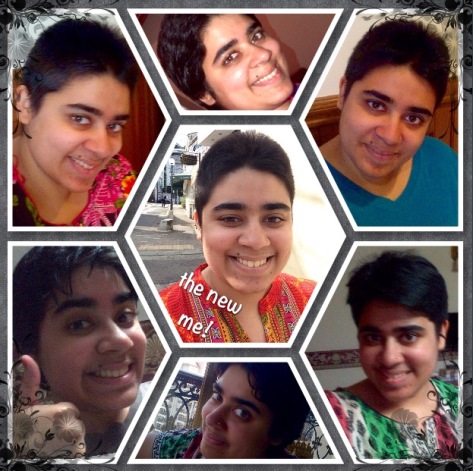
created using the Snap Collage App
Growing up as I did, having dark, thick, lush hair is a sign of health and beauty among Indians (the anthropology of hair – I’ve even written a thesis on it!). Cutting off one’s hair deliberately is done when grieving the loss of a parent, child, or spouse. This why some Hindu widows are seen with shaved heads, mourning for the rest of their lives. And individuals who join the ascetic order shave or pluck (in Jainism) their hair as well to show their renunciation of the worldly life and its associated attachments. It was also mentioned that it would be insensitive for me to be walking around in the UK looking like a Skinhead – believed to be the South Asian-hating British equivalent of the Ku Klux Klan (this is not a fair and whole picture of Skinhead members, but the stereotype). And in a more mainstream point of view, having no hair is obviously also linked to cancer patients and the side effects of chemotherapy. For all these reasons, I couldn’t go against my family and get the haircut I always wanted.
So, understandably, the fact that I nearly shaved it all off was not taken all too well by the family when they saw me after my transformation, but they have thankfully come to terms with it. When I had made up my mind to carry through with my plan a few days in advance, I had tried to prepare my grandparents and family members as best I could to minimize the shock factor. But my reasons for taking the plunge are unrelated to the reasons given by my family…and no less important.
I got my first professional haircut when I was in high school I think. Until then, my dad – who liked me with long hair – had always been in charge of trimming my hair. Going with my friends for my first haircut was a thrill and gave me a strong sense of liberation. My hair was still long, but it was nice to have it styled. It wasn’t long after that I convinced my mom to take me to get brownish highlights. I don’t think she realized what I had done until she saw my locks bleached and had a mini-shock. I don’t think my dad was best pleased either.
Anyway, not too many years later, I started cutting my hair shorter and shorter. From below my shoulders to shoulder to a long bob etc… Every time I’d cut it, I’d wait for it to grow out for about a year before cutting it short again. The same goes for my highlighting experiments every year or so.
Getting a haircut is something of a stress buster for me though. If I’ve been particularly sad and stressed, I’m known to get up one morning, get dressed up, and head to any local hairdressers willing to give me highlights or a cut. Doesn’t matter if it’s a holiday, snowing outside, or a day when I knew I’d have to be in the library studying all night. I guess that’s the power of hair and a makeover. It’s an instant pick-me-up. So my family is used to seeing my medium length pixie cuts since I was in Chicago.
The decision to buzz my hair had multiple reasons. But first, these are the reasons I opted for the short buzz instead of my much-wanted shaved look:
- I thought my scalp would be too itchy and hard to manage if I shaved my head
- I didn’t know if the shape of my skull was pretty enough for me to feel confident (as opposed to embarrassed) about shaving it
- My grandfather was ill at the time and I didn’t want everyone to misunderstand my shaved head as a sign of impending grief.
- I didn’t want my hair growth to be in the ‘awkward and spiky’ phase when I attending my cousin’s wedding in 6 months.
Why I finally decided to get buzzed!:
1. I find this celebrity hairstyle to be bold, beautiful, attractive, and sexy.
2. I think going against the cultural norm is empowering for women and a major confidence boost.
3. It shows I don’t care what others think about me and that I’m comfortable in my own skin…being me.
4. I don’t have extra pressure (spouse or in-laws) stopping me from doing something I’ve really wanted to do for as long as I can remember.
5. I have never seen a picture of a female buzz I haven’t instantly loved.
6. I was always jealous of all my male friends who had short spiky fuzzball scalps and I wanted one myself!
7. I love having short hair but hate the feeling of hair falling into my eyes and face, and tickling the back of my neck, so this would be perfect!
8. If I can go through with this, I can do anything!
And the last 2 points are more philosophical and probably the most important:
9. I wanted 2015 to be a milestone year for me which would shed the negativity, hardships, and depression I had endured for the preceding 10 years with hopes of happiness, fearlessness, and contentment for the next decade. I wanted to replace my old skin with the brand new me!
10. Because Indian hair grows an average of 1cm per month, I wanted only the newest memories created in 2015 to grace my head, so to speak. So buzzing my hair to 2 to 4cms meant I could do that to some extent. I wanted to detach myself from the old pains and not have them burden me in my new quest.
Kudos to my dad for showing me this brilliant YouTube video of Pritam’s Mashup Performance from this year’s GiMA (Global Indian Music Academy) Awards. Not only are the 3 performances brilliant, the video also inspired the idea for this blogs post!
I love Bollywood music and always have. However, I can’t remember lyrics if my life depended on it! Do I sound like anyone you know? Yeah…there is a whole community of us hidden across the world. The only words I can remember (and only after hearing it) are the catchy and overly repetitive song choruses used today. So a mashup is an ideal way for me to enjoy music.
Back in the day, I always felt a bit out of my element in America because other young people would start cheering before even two seconds of the intro of any popular song came on at a dance party, for example, while my own recognition response would have to wait until I’d hear the chorus. May not matter much if you’re just there to dance, but unfortunately, I don’t enjoy dancing and only get on the dance floor and dance if I know the song playing and can sing along to parts of it. I know, bummer for me.
Anyway, getting back to the point, this delayed recognition meant that being in singing or music environments was (and still is) a rather difficult and arduous ordeal for me growing up. Having to participate in a game of Antakshari with family in India by far tops the bill for most uncomfortable situations ever. India Opines disagrees with me and uses cute GIFs to give reasons why it’s the ‘Best Indian Game Ever’ (which apparently requires little skill to play), but I stand by my statement of traumatic (despite the excitement I felt just spending time with family in an entertaining way).
For those who don’t know, Antakshari began as a family pastime and singing game played between 2 opposing teams where the first verse of Indian songs are alternatively sung by each group, but the first consonant of the song must match the last consonant sung by the last team (confused yet???). It has featured a lot in romantic films with Bollywood dancing accompaniment (such as the video below from the movie Maine Pyar Kiya) and has even been popularized as a popular Zee TV singing show / musical competition game show since 1993 (hosted until 2006 by Annu Kapoor). The parlor game is also most often played while on a road trip and preferred over collectively watching a movie in silence, for instance, because it facilitates participation and entertainment for all ages instead of a bus full of snoring and lethargy.
Thankfully the cute little me didn’t know Hindi that well – and knew only one song that started with the letter ma – and would sometimes be unlucky enough to start off the game with my rendition of Hum Aapke Hain Kaun‘s song ‘Maye Ni Maye‘ – jumbling up the lyrics soo bad that I’d become the hilarious opening act for the group. (To be fair, that is a fond memory I retain of the sport…)
Point: Don’t get me wrong, I love watching and listening to Antakshari when there are energetic players on both sides, but being roped in time after time was difficult because I never felt like I could walk away or control the situation. It took me listening to Pritam’s fantastic mashup performance from last month (and the fact I could sing along to all 10 minutes of the clip!) to realize just how uncomfortable I used to get from being dragged into a game of Antakshari in my younger days because I was hopeless at memorizing song lyrics from the beginning verse!
3D Shadowbox Art: The Seven Dwarfs
November 9, 2015
Without sounding weird, I had a big urge to cut stuff up a few days ago and make something creative. Because I tend to strain my hands and wrists pretty easily, I wanted a project that I could both finish and work on in small bursts without overdoing it. So I decided to make a 3D Shadowbox! Isn’t it pretty?
When I was in Japan, I had taken a hobby class at Yuzawaya that taught me how to go about the process and it was love at first class! The steps are relatively easy if you have steady hands and there is much room for individualization in projects. The print I chose to work with this time was a postcard-sized vibrant color image of Sleeping Beauty’s seven dwarfs.
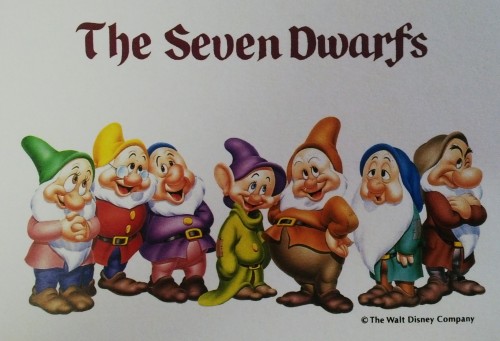
Original 2D Print
With the help of glue, foam, a brown marker, cutting board, x-acto knife, and much color-coded pre-planning, I set myself to this paper cutting and assembling task 🙂
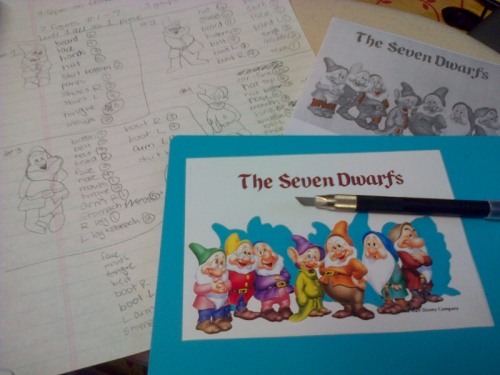
Planning Stage (LOVE this photo!)
Here are some photos of the process and final product (sans box frame).

Cutting and Assembly

Final 3D Shadow Art
Let me know what you think!
How To Make Instant Sugar Wax at Home with 3 Ingredients!
November 7, 2015
**I really could have used this recipe when I was living in the UK and US trying to wax by myself for years! Now that I use an epilator, my need for instant wax has diminished considerably (though not completely).**
Recently, when I made a trip to Japan for what I thought would be a fleeting 2 weeks, I left my razor and epilator behind, not realizing the trip would morph into over 4 months. In desperation, I set out to find and make my own wax so that I could at least remove hair from my lip and chin, if nothing else. It was the middle of a hot summer there, so I also wanted to wax my underarms so that I could wear some sleeveless clothes there!
My attempt at making sugar wax turned out to be a successful endeavor and the recipe I used was taken from here. I decided to make half the recommended amount because all the areas that needed waxing for me were small (see above).
Instant Sugar Wax Recipe
This simple recipe involves only 3 ingredients:
1/2 cup sugar
2 tablespoons tap water
2 tablespoons lemon juice
Follow these easy instructions to make your wax:
You’ll need a pot (be safe and avoid the nonstick) to heat the mixture. Heat on medium as the sugar will melt then boil and bubble, which can easily burn you if it froths and to the point of overflowing. Mix until the sugar mixture thickens a little and turns dark like maple syrup. Consistency should be syrupy and take about 6-8 minutes.
Immediately take the pot off the heat and pour into the container you wish to store it in. Do this while it’s still hot so that the wax doesn’t harden and stick to the pot. (At this point, the wax is ready-to-use!) When I made this wax a second time in America, I made the mistake of leaving the wax in the pot and going out for lunch. When I got back, I was able to melt the wax enough to get it out, but the wax was nowhere as good at doing it’s job because it has been heated too long!
The wax can be stored at room temperature and seems to hold for ages! I put my wax into a small glass bowl, let it cool, then covered it with cling film and stuck it into my bathroom cupboard.
If you would like to see photos of the process, click here.
Personal Tip: I like to heat my cold wax for about 20 seconds in the microwave before I start waxing so that it’s warm but not scalding hot!
It’s Been A Long Week!
November 7, 2015
The first week of November is coming to an end, and truth be told, I’m bone tired! I don’t know if it’s due to all the writing and retelling of my weight woes that’s brought it on, but my body aches all over and I feel washed out and akin to a zombie since yesterday 😦
I grew up in a five-day week culture (and live in in six-day week culture) and the thought that I’ll still be blogging on the weekends is enough to make me cry. Obviously the fault is my own… I just assumed that a blog challenge like mine required me to have a strict writing routine that would become difficult to get back to if I took weekends off.
I’m usually the first to yell TGIF happily at the start of every weekend! It’s already the end of Saturday and where did the past 2 days go!? I think I blinked and they went without me noticing…how upsetting! Add to this the fact that Diwali celebrations start from Monday, and it’s hard to imagine how the next few days will go!
Nevertheless, I’m determined to stick to my 30 Day Blogging Challenge, so I better get to it!
Have a fantastic rest of weekend everyone! Bring on the festivities…
My Obesity Problems started with a Choco Pie: Part 2 (Journey from PCOD to Weight Watchers to Gymming Frustrations)
November 5, 2015
This is the second post of a 3-part series about my weight woes. Read Part 1 (Journey from Childhood to College) here and Part 3 (Journey from Physical Fitness to Mental Fitness) here.
Imagine you are an obese and content Indian female, excited about starting your MSc in a field you want to carve a future in, with all of life’s possibilities in front of you. Then, imagine you go to see a gynecologist who scares the living daylights of a 21 year old you as she explains how your PCOD condition could lead to high chances of infertility and hinder your prospects of having any normal “happily married life.” This is why, the numerous women doctors dictate, I need to lose weight now!
**Insert head roll and long rant about different life priorities/choices, preconceived notions of marriage, and not to mention the ignorance about one’s gender and sexual identity.It is NOT a given that every person is interested in marriage, the opposite sex, or giving birth to babies – and each issue is mutually exclusive!**
To be given such pointed threats by the doctors, that I might lose the ability to conceive and procreate if I leave the matter unattended to (regardless of my personal inclination to or not), was both horrifying yet exceeding infuriating. It seemed my weight worries migrated from being my own person’s concerns to that of a third party. I wasn’t dismissing my disease’s importance, but I also felt like my symptoms were not unique just to me, and it was glaringly not a life or death situation. The nutritionists weren’t much better as they weren’t taking my lifestyle and schedule into account when prescribing me a meal plan to follow. Studying as an international student abroad, these Indians gave me diets that’s clashed with what was available to buy and make in my surrounding. Needless to say, I never visited the same doctor twice.
Guys and gals still found me beautiful (or at least not ugly), I was happy doing what I wanted to, and the family and I had come to accept, to some extent, what was ‘Manjree’s weighty problems.’ Friends would be surprised to hear I was considered “obese” (unless they were just being super sweet) and the chubby arms bothered no one at grad school. Seeing so many girls who looked like me casually walk around wearing sleeveless clothes and short cocktail dresses, I definitely gained my nerve to start doing the same.
Again, memory might fail me, but all the right stars seemed to align around then. I found a fantastic GYN in India who didn’t feel the need to boss me around or shamelessly rebuke me. A cocktail of drugs twice a day to keep the PCOD in control was all she demanded before sending me off with her blessing to study further. Check. Upon arriving in England and visiting the GP there, I was told my “obese” status meant I could redeem a free pedometer, a Weight Watcher‘s trial for 12 weeks, and subsidized gym membership too. Some new health initiative by the NHS in my city. I decided to seize the opportunity and give it a try… nothing to lose. Check Check Check.
Although I didn’t walk or exercise much due to the grueling demands of a 12month intensive practicum-based degree, Weight Watchers turned out to be a dream come true. I lost 7kgs that Fall and felt great. I’d never ‘lost’ any weight before, per se, so I never knew how it felt to fit into something a size smaller than I normally wore. (Of course I never bought the smaller size wardrobe because of a sixth sense that I might never fit into them again!) Despite my schedule, I managed to be creative with the diet and I was finally starting to get comfortable with this new world of cooking (something I finally got interested in towards the end of undergrad). It was soups and stews galore I tell you!
Despite a pretty serious addition and craving for chocolate 24/7 as a direct result of joining Weight Watchers (is this another false memory spurred by the Japanese Choco Pie incident?), going to WW meetings gave me a sense of solidarity in the struggles to be rid of hard-to-lose fats. When I didn’t renew my membership post free sessions, and I started getting busier and busier, I slowly gained back those kilos I’d lost, but smoothly over many months. I didn’t regret it or feel upset or shameful. I took it in stride, as I take most of my weight fluctuations, and life continued.
It’s been 5 years since I returned from my MSc and the best word that can describe my battle with my weight is – FLUCTUATING! As the weighing scale has proved time and time again, my weight has been up, down, sideways, and upside down over time. I guess it’s mirrored the confusion and various directions my life has taken these past few years…
For one, I’ve traveled a lot and lived with different family members for 1 to 2 months at a time (not to mention the multitude of weddings and celebrations I’d attend for 2-5 days at a time). Uprooting myself and making a home somewhere new, for short bursts, affected my lifestyle, diet, and also my weight. To live with extended family, even temporarily, is always a sort of weird adoption isn’t it….Whether it was to take GRE classes, do research at a specific library for an article I was trying to publish, taking a month-long cooking course, attending conferences abroad, or staying put while I attempted a month-long silent fast, I had to get used to the diet and cooking methods of that particular household. Some household styles (like using ghee in everything!) resulted in me gaining weight, while other household styles (like being forced to have soup and salad twice daily) resulted in weight loss. Regardless of which direction my weight went during my stays, the changes were always noticeable and time-consuming to adapt to, and later on, to recover from.
But the non-stability hasn’t bothered me as much as you’d expect. To be obsessed with one’s weight, I find, is a huge vortex of pain and suffering. So I’ve been avoiding that route like a plague! Although I’ve always had relatively low self-esteem (and understandably) because of media and society’s portrayal of ‘slim is beautiful’ and ‘fat is lazy’ I have been lucky enough to not have that propaganda overtake my life. (Other serious problems and thoughts have led to depression and self-harming behavior in my time, but my obesity never ranked anywhere in the top reasons for these thoughts.)
Instead, my earnest wish to simply ‘get healthy’ and have a ‘balanced diet’ – as opposed to ‘lose weight’ – has proven to be both an exciting discovery and non-cumbersome. In fact, it was my desire to be healthy and fit (coupled with the pleasant lull of nagging family members who consistently complained about my weight problems) that led me to join the gym for a year (despite all my travels), before I left for Chicago. Although I did my best to follow the gym trainer’s advice and exercised diligently, I ended up frustratingly stable on the weighing scale. I say frustratingly, but that’s not quite how I felt on the matter. Whilst I may not have lost kilograms, I was toner, fitter, lost inches, felt more confident in my own skin, and was replacing plenty of them fat cells for muscle (thanks to my love of weight lifting over cardio).
Nevertheless, my numerical weight and “obese” status remained unchanged….
…Stay tuned as my weight journey continues in Part 3 (Journey from Physical Fitness to Mental Fitness)! Stay balanced and stable! 😀
My Obesity Problems started with a Choco Pie: Part 1 (Journey from Childhood to College)
November 4, 2015
This is the first of a 3-part series about my weight woes. Read Part 2 (Journey from PCOD to Weight Watchers to Gymming Frustrations) here and Part 3 (Journey from Physical Fitness to Mental Fitness) here.
I’ve been overweight since I was a child, and clinically categorized as obese for nearly half my life. I’m still courageously battling my weight issues daily. But does my weight actually bother me? Yes and no.
It may be false, but in my memories, the origin of my weight problems started when the Great Hanshin Earthquake hit Japan in 1995. I was seven years old then, with no idea what an earthquake was… Our apartment building swayed a bit too dangerously for us to stay there, so we moved to a nearby school grounds to live for the next few days. We were homeless and dependent on strangers for food and water. Being a part of a fairly large Indian community, all the families stuck together huddles in blankets (in unusual sub-zero temperatures) on the floor of the school. One of the families, their home relatively safer to get to in order to scavenge edible scraps (I suppose), passed out Choco Pies for us kids to eat – the cream-filled chocolatey goodness that is so popular even today in Japan.
I started going from scrawny and underdeveloped to becoming ‘fat’ after that Choco Pie.
Ironically apt isn’t it? Because those chocolate Pies were what stopped us from going hungry in a time of crisis. (Not to mention that starvation, hunger, and famine are my most passionate research interests today.) I still eat them Pies whenever I visit Japan. I don’t blame the Choco Pie, just the memory of eating it while in shock and full of fear is seared in my memories… and the fact that I started developing a paunch and getting comments about my weight not long after.
When we moved to the US it just got worse. In fact, with every new move I made, circumstances just got worse and so did my diet. Even though I worked my ass off in PE all through school, and my diet at home was relatively good and healthy (in retrospect) compared to my peers, I still couldn’t stop gaining. I wasn’t actively trying, but I was definitely putting in all the effort I could to be on par with my schoolmates.
Had I been a child of the 21st century, I probably would have been told by a doctor to get on a diet and lose it immediately using xyz methods. Or even pestered by unforgiving contemporary aunties and uncles from the age of ten to stop being a lazy bum. Thankfully, I wasn’t. Well, I might have been, but I don’t recollect it.
Having a weight complex was disguised more subtly back then. I never got sneered at (at least for my weight) in school, coupled with my parents’ conservative style of dressing me in loose comfortable clothing, and my own wish to not reveal my bulges. I got ignored as the quiet mouse I’d been programmed to be (gracias Nippon) by all but my closest friends. No nail polish, no sleeveless shirts, no dresses, no shorts, and no fashion sense. I guess I was a wallflower? I dunno. Either way, I was self-conscious, and worried about being firmly in the overweight category with no idea of how to get to the right shape. So while others probably saw me as having no modern fashion sense, I worried about the body under the clothes. Communication gap anyone? Haha.
When I decided to go to boarding school for my senior year, with every life lesson I gained, I also gained matching kilos because of the horrendous vegetarian options given to us at the cafeteria. And with a small weekly allowance that gave me enough to afford Lays, Pepsi, crackers, Maggie, and the all-important toilet paper to sustain my livelihood that year, I was definitely off on the wrong foot. If I hadn’t already crossed over into obese territory before, I definitely crossed it by my high school graduation. But at least I had a fantastic and memorable year in the hills of South India!
Then came college. Thankfully there was no cafeteria program in the UK – you had to fend for yourself. But, being the stingy and money-pinching girl I was, plus the fact that I had actively avoided learning how to cook up to that point, the price of fresh produce made me freeze in fear. I probably lived off of MTR packets that had been couriered to me from my parents for the first half of my freshman year. At least until I found friends who would cook for me. Not out of pity, but out of friendship.
With college came passion for knowledge and academia, freedom and independence, and the joys of dating, and lifelong friendships. Haven’t we all heard of newlyweds gaining rapid weight from happiness? Yeah, that completely happened to me … minus the whole newlyweds thing. I think I came back home that first summer break having gained 10 kilos. But when my friends and romantic interests loved me unconditionally exactly the way I was, giving me daily confidence-boosts about my abilities and capabilities, why would the weight problem I’d always struggled with bother me?
So when I was finally diagnosed with PCOD (Polycystic Ovary Disease) back in 2007 (after years of suffering from menstrual irregularities), I had already begun the transformation from timid self-conscious teenager to the woman who had miles more body confidence and embraced her frumpy and rather unfashionista style. The PCOD also confirmed 2 things: (1) it wasn’t my fault; and (2) there were people who liked and respected me no matter my body shape and size. Of course the doctors who diagnosed me and who I consulted with would disagree, even telling me that I should stop studying to lose weight if I said I didn’t have the time (and in what universe would that have worked!). But then the question would become more moral wouldn’t it – stop following your dreams and passions in exchange for a slimmer me? It didn’t seem justified back then somehow…
…the story of my weight journey continues in Part 2 (Journey from PCOD to Weight Watchers to Gymming Frustrations) and Part 3 (Journey from Physical Fitness to Mental Fitness)! Until then, stay plump and happy! 😀
Selfie Silhouette Paper Cuts
November 2, 2015
We all fold and cut paper to make snowflakes when we’re children… it’s like a rite of passage. But it took me over two decades to realize that paper cutting with scissors (for sissies) or x-acto knives (for experts) is in-fact a serious art form.
I was (re)introduced to paper cutting about 6 months ago, when I came across a series of bilingual Kirigami books for ¥100 each at the local Daiso. I used the templates given in the books to make a few origami cut outs but found them somewhat restricting and am now experimenting with other forms of paper art.
For the past few days, I’ve been obsessively surfing the net to see how people cut paper silhouettes. I loved the idea and just had to try it out myself. Here are some instructions on how I went about it!
HOW TO MAKE A PAPER CUT SILHOUETTE
Initially, I wasted lots of time unsuccessfully trying to find a picture of myself with a side profile, so I ended up taking a selfie silhouette photograph with my smartphone and uploading it to my laptop.
I computer edited it before printing out several to use as templates for cutting out my own versions.
Now cut!! I ended up making 3 paper cutting attempts. The results, thankfully, didn’t turn out to be a disaster (despite going the sissy route and using scissors to cut instead of my trusty x-acto). At least my facial features are identifiable! Woo hoo!
… and now I’ve got 6 little paper cut Mini-mes sitting on my work table 😀
So what do you think? Send me suggestions and comments below! Happy Cutting!
Recipe: Spanish Gazpacho
November 1, 2015
Spanish Gazpacho
**A smooth classic cold soup recipe made with local Indian ingredients… perfect for those hot Indian summers!**
This is a Vegan, Vegetarian, Raw, and No Chew Recipe!
Ingredients:
Directions:
- Blanch tomatoes in a pot of boiling water for 2 minutes. Drain and peel the tomato skin and chop roughly.
- Into a big blender, add tomatoes, cucumber, green pepper, onion, garlic, and green chilli, Blend. Add water, vinegar, salt and black pepper and blend again.
- While blender is on, pour in olive oil slowly. Keep blending for another 2-3 minutes. Color and consistency of soup should change.
- Add finely chopped fresh coriander in and pulse to incorporate thoroughly.
- Refrigerate for at least 5-7 hours before serving cold.
Note: Make sure you use the reddest ripest tomatoes (mine weren’t) in combo with olive oil for best color and taste. This recipe tastes great on the next day.
Serving Size: 5-7 people
New Determination and November Goals: A 30-Day Challenge
November 1, 2015
Happy November to the blogosphere!
I’ve missed another year of Halloween festivities and now its on to NaNoWriMo month. Although I’d secretly love to write a novel or have my own love story written down before I croak, it’s definitely not on my list of priorities 2015. Indeed there are lots of plans and ideas I have brewing for the future that will make their appearances throughout the next round of blog posts, but all of them have one thing in common – an active mind.
It’s been roughly 3 years since I updated this blog. Only seems like yesterday I was hunched over my laptop with worry crinkles on my forehead wondering what I should post next…alas! Suffices to say, I’ve been busy with a spectrum of emotions and milestones that make up my so-called life. So I’m not regretting letting my blogging duties slack. In my 3 hiatus, I’ve spent a major part of it as a graduate student at the University of Chicago for another Social Science MA (as mentioned in earlier posts here and here) which I struggled with from Day 1. In fact, I’m still struggling to finish up, and ended up returning home after trying my hand at working part-time out there in the big bad world. After that, I spent a considerable amount of time recovering from a cocktail of unhappiness, stress, and exhaustion, and spent months in Japan reacquainting myself with my childhood home while caring for an ailing grandparent. I’ve managed to take up many new hobbies in this last six months, surprising even myself as I didn’t think I had a creative bone in my body, and even managed to squeeze in some time for self-discovery via a meditation retreat!
So now, with only a couple months before we ring in the new year, and using the excuse of NaNoWriMo to keep me motivated, I’ve decided to activate my charcoal-like mind to challenge myself to write at least a post a day for all of November 2015. I know you’re technically supposed to write blogs to help people and tell them what to do (or at least that’s what successful bloggers advise) but for me its more a mental exercise for me to stay on top of my game. Blogging, I find, involves a lot of time, effort, and hard work. It is a daily battle to come up with something that can pass as acceptable for viewage by thousands of unknown people out there… if you know what I mean!
So it’s my aim this month (November 1st – 30th 2015) to get back into writing, reading, and thinking creatively. What’s important here is that I do this alongside all the other responsibilities and goals I’ve got lined up already. A cousin’s wedding to attend at the end of November, planning where to go in December, continue to feed my Asian drama addiction, keeping my DIY artsy crafty projects going, and doing market research and gaining the skills and knowledge base to start my own business sometime early next year! And of course, last but definitely not least, I’m trying to be happy, stay connected, live healthy, exercise, and eat healthy.
All right… it’s time to get a’writing! Wish me luck on my 30-day challenge!!
~M
My 1st Attempt (and Failure) at Writing Satire
August 1, 2012
**I wrote this piece for school back in 2004 when I was in high school (age 16). It was a miserable failure as a satire piece, and my understand and use of the term cannibalism is completely wrong! But I love my imaginative ideas for the piece, so I’m sharing! 🙂 **
Hunter or Hunted?
There is a perpetual common belief that cannibalism is wrong, while hunting is okay. Whether it be with a rifle, shotgun, handgun, or something more distinctive, like a slingshot, army knife, mallet, or one’s own hands, hunting is still legal in some areas – when following certain conditions – but legal nonetheless. How can this be? Won’t inflicting harm on animals, intentionally, breed more violence among human beings? How can someone who kills other living beings for sport, or the thrill of it, not be considered a cannibal?
I propose a solution, more precisely a lesson that will allow the wrongdoer to see and feel the gravity of the situation in which he has been put upon himself. This method will be conducted in two stages. The first will be used for those who hunt with traditional weapons, such as the rifle or shotgun. The second and more dangerous of the two will be for individuals who like to take risks by hunting with mallets or their bare hands. Although the two solutions are very different, both will be very successful in reducing the number of hunters in society today.
The first method allows the hunters to get to know the atmospheres the animals live in, especially the ones they were caught trying to kill. Prisoners are taken to a special jail that is not a building with cells, but resembles a real forest with animals. The goal is to last two days in the wild, with only their jail suits and a bottle of water. No shelter is provided and neither are weapons to fight off predators. Survival instincts and being comfortable in nature is a must to pass the course. On the other hand, the second method demands prisoners to be placed in an arena without any weapons or armor, and encompasses the idea of gladiators. The animal the hunter was till recently trying to kill is then placed alongside the criminal, followed by another. If they are not fierce, such as deer or rabbits, they are to be substituted with wild animals, like bears or tigers. Without any protection, the goal is to survive the attacks of the “enemy” for five minutes. These two methods will make many, not only the criminals, think twice before going hunting again.
Poem: The Secret
July 31, 2012
**I wrote this poem for my class back in 2003 when I was a junior in high school (age 16). I can see where this needs improving, but I’m leaving it as I originally wrote it for now.**
The Secret
In New York, there lives an old woman.
To the rest of the world, she is only known as Anne;
A reputable jewelry store owner.
She’s a widow and her past is a blur;
Her husband had died many years ago
But that is all anyone knows of Poe.
Over the years, Anne has bought two manors,
She’s highly educated with manners.
Anne runs her store with determination,
For the place is a big foundation,
And her vast knowledge of diamonds and pearls
Makes true the desires of all girls.
Her fascination with Prohibition,
Caused a secret hidden from suspicion.
At night, the store transforms into a bar,
Here drinks served to underage kids are.
Defining AHIMSA
July 28, 2012
***Arbitrarily found this written in a pamphlet somewhere, but it sums up the attributes of ahimsa [nonviolence] very well!
AHIMSA is…
Avoidance of
Harm
Intended by
Mind
Speech or
Action
Children’s Skeletons and Extra Terrestrials
June 8, 2012
This post took me back to my human osteology days! On another note, it’s interesting how there is an obvious similarity between the skull and dentition of a juvenile skeleton and the artistic recreation of what aliens look like (called skitters – see a picture here) in the American TV series FALLING SKIES…
The following caption, as well as the photo, is courtesy of io9:
Inside the mouth of every child is a terrifying double row of teeth. Not that you’d ever know it — muscle, skin and bone prevent most of us from ever catching a glimpse of this extra dentition. Here’s your chance to get a close-up look at what lies beyond the gum line.
On some level, most people probably recognize that a child’s erupting permanent teeth have to be situated more or less right on top of their smaller predecessors, in order to dissolve their roots and ultimately replace them (a process known as exfoliation).
What many fail to appreciate, however, is just how little room there is for exfoliation to take place. This picture [click for hi-res], taken by photographer Stefan Schäfer at the Hunterian Museum in London, reveals several permanent teeth…
View original post 123 more words
Non-Eatable Foods
June 7, 2012
I found this post really interesting while still being informative. It’s a take on everyday life that not many people care to discuss (or divulge) but is perfectly natural to do.
We are adults now, so we can eat balloons whenever we want.
I swallowed a coin. It is not accidental but I really put it into my mouth and sipped every irony taste of it. It is delicious; sometimes it could be a substitute to candies if you ran out of it.
The coin traveled down to my insides but got tucked within my esophagus, and that wasn’t a good feeling. I fought against my involuntary muscles to free it, but to no avail. Quickly, my brother handed me a banana, ate a slab of it but before taking it in, my brother slammed my back and I vomited it all, including the coin. Aaah, I’m amazed it worked!
My friend used to eat dog food, but he thought it was biscuits for humans. Nonetheless, he wouldn’t know the difference and it tastes alright. Another friend of mine loved…
View original post 162 more words
Capturing Scenes from Jammu and Kashmir Part 2
June 2, 2012
These are the second half of my favorite shots taken from my trip to Jammu and Kashmir taken at Gulmarg and Srinagar. Enjoy!
~M
- Scenery while driving from Pahalgam to Gulmarg
- Gulmarg Landscape
- Phase 1 of the Gondola ride in Gulmarg
- Sledging (aka sledding) in Gulmarg
- Gulmarg
- Snow-capped mountains in Gulmarg
- Gondola and the view in Gulmarg
- Shikaras docked in Dal Lake, Srinagar
- Shikaras on the Dal Lake
- Dal Lake in Srinagar
- Sunset while on a shikara in Dal Lake in Srinagar
- Shikara on Dal Lake in Srinagar
Capturing Scenes from Jammu and Kashmir Part 1
May 29, 2012
I’ve just returned from a family holiday to Jammu and Kashmir which lasted a fortnight. I’ve always wanted to visit since I can remember. I’m not oblivious to the fact that I’ve been feeling left out – like I’d missed an experience of a lifetime – whenever I’d see photos of my parents and older brother posing for the camera in kashmiri dress. They visited before I was born, so no one is at fault, but the feeling of having missed an important milestone in our family still lingered. As it turned out, my mother’s side of the family planned a trip to Jammu and Kashmir for all of us. So the dates of May 17 to May 27 were set aside and plans were made. With my aunts, my uncles, my cousins, my grandmother, and even my little nephew, we were a band of 18…and boy was it an experience alright!
I’ve put together some of my favorite shots taken in Katra and Pahalgam during the first half of my trip. Have a look!
~M
- View while walking from the helipad to the Shri Mata Vaishno Devi Mandir, Jammu and Kashmir, India
- Scenery while driving from Katra to Pahalgam
- Betaab Valley in Pahalgam
- Betaab Valley in Pahalgam
- View of Chandanwari in Pahalgam
- Scenery visible from Chandanwari in Pahalgam
- Shops and Background View of Chandanwari in Pahalgam
- Horses and crows grazing in Chandanwari in Pahalgam
- Animals grazing in Aru Valley in Pahalgam
- Aru Valley in Pahalgam
- Breathtaking Scenery from Aru Valley in Pahalgam
‘Mehki Mehki’ Item Song from Film Game (2011)
April 26, 2012
So I have talked about Bollywood item numbers in an earlier post, however, I just wanted to share what I consider to be the best attempt at a proper item number in recent times. Below is a song ‘Mehki Mehki’ from the Abhishek Bachchan starrer Game (2011). It was sung by Shreya Ghosal and picturized by Sarah-Jane Dias using a burlesque form. I really enjoyed it and I think you will too!!
Body Images: a comparative approach
April 21, 2012
Whether you look like one of these
or like this Venus figurine
No one has the right to make you feel bad about how you look or tell you that you are imperfect in any way.
Fashionable trends will go and come and it makes little sense to follow them blindly. However, it’s important to realize that current western ideas of beauty as thin and slender with a flat belly was not always considered beautiful in the past, and not even among different societies today. In many societies, women who have a bigger derrieres and wider hips are found to be more attractive than those without. Also, many people have also been known to prefer at least a fashionable little bulge on the belly and waist, rather than flat or six-pack abs.
Your body type will be considered ‘perfect’ somewhere in the world, even if it is not in your own community – and this I strongly believe is true for each and every person in this world. Therefore, it is no surprise to learn that if a man or woman wants to be an actor or actress, they need only look for the right entertainment industry in the right part of the world to join. This is why so many foreigners with ‘outside’ roots are becoming commonplace in Bollywood – the Indian film industry – and achieving recognition here.
This brings me to something I remember from my Introductory Anthropology classes back in my undergraduate days. It was relatively early on that we were introduced to the existence of groups like the feeder communities in the United States. Personally I find feederism really interesting because their ideas of beauty and erotica are often at complete odds with our skinny-conscious society. Unless someone does not wish to be fed or gain weight, and is being pressured or force-fed against their will, I see no problem in this kind of lifestyle. Read this article for more on feeders. Comparatively, this kind of force and pressure is not uncommon in our society either, with such eating disorders as anorexia nervosa and bulimia nervosa affecting so many people, which are in complete contrast to the ideologies of feeders and feedees.
Let me know what you think!
Some Favorites from The Secret Policeman’s Ball
March 25, 2012
I haven’t watched all the 2006 and 2008 acts but these are some of my favorites from Amnesty International‘s The Secret Policeman’s Balls at the Royal Albert Hall, London.
I’m also looking foward to watching the The Secret Policeman’s Ball 2012 too, which took place in Radio City Music Hall, New York City on March 4, 2012 to mark the 50th anniversary of Amnesty. I’m sure it’ll be just as amazing as the other two! It’s definitely high up on my list of things to watch!
~ Enjoy!!
Bergen-Belsen Cannibalism Quote by Lord Russell of Liverpool
March 23, 2012
“During the last few months of the camp’s existence the shortage of food was so acute that the prisoners (the camp staff were still well fed) resorted to cannibalism, and one former British internee gave evidence at the trial of the Commandant and some of his staff that when engaged in clearing away dead bodies as many as one in ten had a piece cut from the thigh or other part of the body which had been taken and eaten, and that he had seen people in the act of doing it. To such lengths had they been brought by the pangs of hunger.
This witness said:
I noticed on many occasions a very strange wound at the back of the thigh of many of the dead. First of all I dismissed it as a gunshot wound at close quarters, but after seeing a few more I asked a friend and he told me that many of the prisoners were cutting chunks out of the bodies to eat. On my very next visit to the mortuary I actually saw a prisoner whip out a knife, cut a portion out of the leg of a dead body and put it quickly into his mouth, naturally frightened of being seen in the act of doing so. I leave it to your imagination to realize to what state the prisoners were reduced, for men to risk eating bits of flesh cut from black corpses.”
— Lord Russell of Liverpool 2008, p. 178
The “camp” that Lord Russell of Liverpool, also known as Edward Frederick Langley Russell, was referring to in this quote was Bergen-Belsen. I originally came across this account by Lord Russell in Garry Hogg‘s 1958 book Cannibalism and Human Sacrifice (p. 188-189) while doing research for an essay on survival cannibalism in the 20th century. Because The Scourge of the Swastika was originally published in 1954 by London: Cassell, with this 2008 version just harboring a new introduction by Alistair Horne, I was able to track this second-hand reference to its source.
Two of my quotes posted on this blog have made mentioned of cannibalism. To read them please click here and here. I have already evaluated that the practice of humans eating flesh from other humans is neither a strange nor rare practice around the world. This practice is thought to be most justified as a method of survival. Thus, the act of cannibalism taking place in the mortuary of Bergen-Belsen due to acute starvation and hunger is understandable. For prisoners to have to resort to such ‘inhuman’ measures, however, can often lead to much embarrassment and a devaluing of self-worth. Still, it would be erroneous to assume that the prisoner mentioned in the witness testimony speedily ate the chunk of human flesh because he was “naturally frightened of being seen in the act.” If this act referred to the prisoner being caught by Nazi officers for not following orders, that would be true. However, to assume that anyone would be appalled or would retaliate to see a prisoner commit “the act” of cannibalism is unlikely and unknown. At least that is what I believe.
Surprisingly, this is the only (direct) evidence I could find of cannibalism taking place during the Holocaust. You can read this section here on Google Books. While many sources express that cannibalism was rife during this episode in history, I have been unable to find details in the literature. This may be because of the embarrassment felt by camp survivors who partook in this activity post-WWII. As their dire circumstances have been replaced by comfort and reintegration into societal life, this may in fact be a memory many have repressed or hidden from historians, archivists, and loved ones.
Reference: Lord Russell of Liverpool 2008. The Scourge of the Swastika: A History of Nazi War Crimes during World War II. New York: Skyhorse Publishing












